A BETTER TOMORROW



As I complete the last year of my term as chair, I am reflecting on my time serving this important department. It came at a silent inflection point in our program: we celebrated our centennial in 2014, and I revere our history and the tradition of excellence it represents, which is passed from one generation to the next. However, my term was also positioned to look forward and to build the future excellence of the University of Delaware's Chemical and Biomolecular Engineering program.
Today, we are becoming a more diverse faculty and we educate and mentor more students from a wider range of backgrounds. Our scholarship covers the full range of chemical engineering technical areas, including thrusts in biomolecular engineering and synthetic biology, catalysis and energy, materials synthesis and processing, particle technology, and systems engineering. Excellence is an extensive quantity for a public program–in order to be considered a top program, we must excel and lead across the entire breadth of the discipline in scholarship, education, and professional service.
In building toward the future of the department, who could have seen a pandemic looming that would radically shift two years of our scholarship and teaching, let alone our very lives? Thrown into the turmoil of March 2020, our community came together and made monumental changes. But the pandemic gave us a few important things, too: a new familiarity with tools to collaborate, work together, and reach and welcome new students; new pedagogical ideas and insights; a renewed appreciation on the importance of residential university
education, especially at Morrill Act land grant universities; and a clear vision of the importance our engineering skills and training bring to solving the challenges that our society and the world face at this point in history. Faculty, students, and staff were called to the hard work of the past two years facing this pandemic, and they answered that call.
As chair, it has been an honor and privilege to sit at the center of a hurricane of activity in chemical and biomolecular engineering. Our department is ranked by U.S. News & World Report 9th in undergraduate chemical engineering programs and as the 8th ranked graduate program.
The Department’s 30 faculty and 10 staff teach, supervise, and support 400 undergraduate students, 180 PhD students, and 40 postdoctoral trainees. The department contributes about half of the total sponsored program activity of the College of Engineering. These efforts, driven by our faculty as individuals and their work as part of a culture that fosters and grows interdisciplinary teams, include the NIIMBL USA Manufacturing Institute, two DOE Engineering Frontier Research Centers, the NIST Center for Neutron Science, and an NSF MRSEC.
What an extraordinary place, and what an experience it has been as chair. I look forward to the further heights we will achieve together under the leadership of Prof. Millicent Sullivan, the Alvin B. and Julie O. Stiles Professor of Chemical and Biomolecular Engineering, whose term as our next chair begins on July 1, 2022.

Researchers from the University of Delaware’s Center for Plastics In novation (CPI) have developed a direct method to convert single-use plastic waste — plastic bags, yogurt containers, plastic bottles and bottle caps, packaging and more — to ready-to-use molecules for jet fuels, diesel and lubricants.

The work, reported in a paper in Science Advances focuses on using a novel catalyst and unique process to quickly break down these hard est-to-recycle plastics, known as polyolefins. Polyolefins account for 60 to 70% of all plastics made today.
The UD research team used a chemical process called hydrocracking to break down the plastic solids into smaller carbon molecules, then added hydrogen molecules on either end to stabilize the material for use.
Catalytic cracking is not new. Refineries have used it to convert heavy crude oil into gasoline for years. The research team’s method of hy drocracking, however, does more than just break plastic down. It also converts the material into branched molecules that allow them to be more directly translated into an end product.
“This makes them ready-to-use molecules for high-value lubricant or fuel applications,” said Dion Vlachos, project principal investigator
The Center for Plastics Innovation (CPI), led by Professors LaShanda Korley and Thomas H. Epps, III, focuses on chemically transforming plastic waste into fuels, lubricants and other valuable products in an energy-efficient manner. It is one of six new Energy Frontier Research Centers established across the U.S. and the second to be directed by the University of Delaware.
UD researchers report possible solutions for hard-to-recycle plastics
COMBATING PLASTICS WASTEPhoto by Sylwia Bartyzel on Unsplash
and the Unidel Dan Rich Chair in Energy Professor of Chemical and Biomolecular Engineering, who also directs the Delaware Energy Institute and the Catalysis Center for Energy Innovation at UD.
The UD-developed process requires approximately 50% less energy than other technologies, and it doesn’t involve adding carbon dioxide to the atmosphere, an emissions savings over other commonly used techniques. It can be done in just a couple hours at low temperature, around 250 degrees Celsius.
Importantly, the UD team’s method can treat a variety of plastics, even when they are mixed together, a plus consid ering the way recyclables are managed.
Reducing plastic waste by chemically converting it to fuels can play a powerful role in driving a circular economy, where materials are recycled into something new at the end of their useful lifespan, instead of being thrown away. The recycled components can be used to make the same thing again or, in the case of fuels, upcycled into higher-value products — creating both economic and environmental gains.
“This innovative catalytic approach is a significant advance in our quest for depolymerization processes that involve less energy-intensive pathways and generate highly specific breakdown targets,” said CPI Director LaShanda Korley, Distinguished Professor of Materials Science and Engineering and Chemical and Biomolecular Engineer ing. “This fundamental understanding opens up a new route toward plastics waste valorization.”
Next steps in the CPI research include exploring what other plastics the team’s method can treat and what prod ucts it can make. To begin, Vlachos said the team hopes to expand collaborations to explore other avenues for making valuable products by eliminating waste.
“As this circular economy gets going, the world will need to make fewer original plastics because we will be reusing materials made today into the future,” he said.
Another goal is to develop methods to improve the recy cling process itself.
“We want to use green electricity to drive the chemical processing involved in making new things,” Vlachos said.
“We are very far away at the moment from seeing this, but that’s where we are headed over the next 10 to 20 years.”
Unidel Dan Rich Chair in Energy Professor of Chemical and Biomolecular EngineeringThe Center for Plastics Innovation (CPI) is an Energy Frontier Research Center established at UD last year through an $11.65 million grant from the U.S. Department of Energy. The center brings together researchers from UD, the University of Chicago, University of Massachusetts Amherst, University of Pennsylvania and Oak Ridge National Laboratory to “upcycle” plastic waste — chemically transforming it into fuels, lubricants and other valuable products in an energy-efficient manner. It is one of six new Energy Frontier Research Centers (EFRCs) established across the U.S. to accelerate scientific breakthroughs in critical areas.
“Chemical conversion is the most versatile and robust approach to combat plastics waste.”
—Dion Vlachos
Aditya Kunjapar (right), Chemical & Biomolecular Engineering assistant professor, working with Neil Butler (left) has been named the 2021 American Institute of Chemical Engineers (AIChE) Langer Prize for Innovation and Entrepreneurial Excellence, a highly competitive award that comes with an unrestricted $75,000 stipend to pursue “blue sky” ideas.
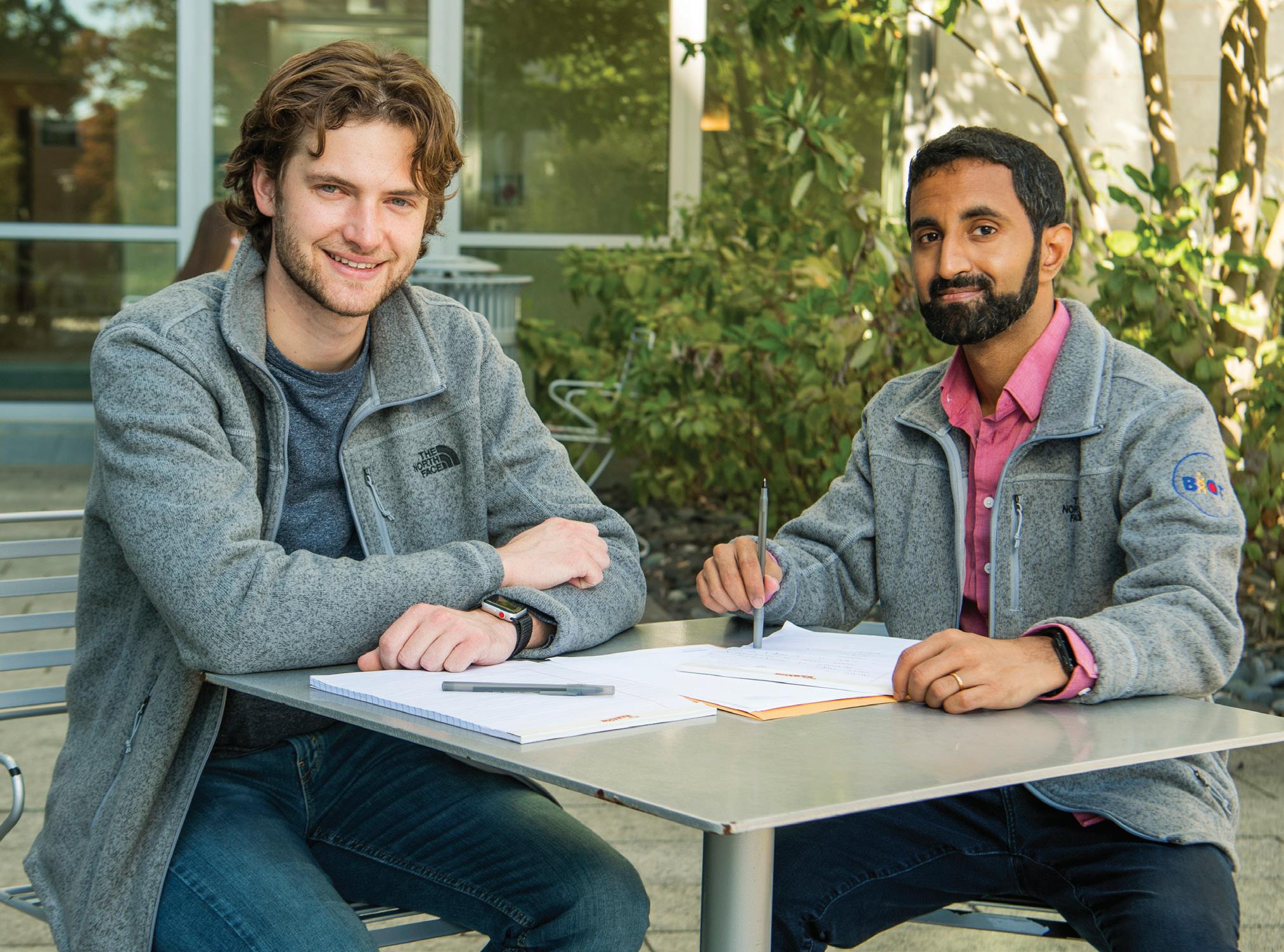
Assistant professor Aditya Kunjapur was awarded the American Institute of Chem ical Engineers (AIChE) 2021 Langer Prize to help transition bacterial-based technol ogy that his lab has developed toward the marketplace.
Kunjapur’s work focuses on engineering bacteria to perform a wide array of func tions, from producing fuels and chemicals to treating or preventing disease. In his UD lab, he focuses on creating and harnessing new chemical building blocks using genetically engineered bacteria. In the case of the proj ect supported by the Langer Prize, his lab is exploring whether bacteria can produce ami no acids that will elicit a stronger immune response, which could lead to applications in vaccines or as immunotherapies.
With antibiotic resistance on the rise, having better vaccine candidates to battle trouble some bacteria would decrease our reliance on finding new antibiotics. Now, Kunjapur and chemical engineering graduate student Neil
Butler are exploring whether synthetic biol ogy tools can lead to the design of a vaccine that could work against bacteria for which there currently are no vaccines.
The $75,000 stipend connected to the Langer award allows Kunjapur’s lab to further explore commercialization of their discoveries, contract out for more research, accelerate the technology and continue conversations with companies to learn about their needs. The lab has also received research funding from the Na tional Science Foundation, most recently from UD’s Horn Entrepreneurship’s NSF I-Corps Sites Program for commercial translation of their work.
Said Kunjapur, “The AIChE award recogniz es that entrepreneurship is really important in the current environment where academic discoveries and inventions related to biotech nology need to be translated to help make a difference in people’s lives.”
‘Blue Sky’ idea to boost vaccine efficacy earns AIChE Langer Prize
Fueled by generous philanthropic support and insights from industry partners, UD has launched a new master’s program in biopharmaceutical sciences.
AstraZeneca, Bristol Myers Squibb and Merck & Co. contributed leadership support to lay the foundation for the program and provided the first five-stu dent cohort with funding, extended internships and mentorship.
Focusing on the field of complex medicines made from living cells or or ganisms, the master’s program includes traditional class and lab work, but also features unique opportunities with industry partners including case study presentations, guest speakers, mentor ing and — its most unique requirement — a 15-month internship.
“This timely, innovative program offers a unique academic and experiential learning opportunity for students across the University,” said College of Engineering Dean Levi Thompson.
“Our holistic approach provides stu dents with experiences relevant to the biopharmaceutical industry, enabling them to make a difference now while preparing for successful careers after graduation.”
The intensive program designed by a team that included both UD faculty and industry representatives is aligned with university programs such as the National Institute for Innovation in Manufacturing Biopharmaceuticals (NIIMBL).
“As we at UD continue to increase our engagement with companies in
the biopharmaceutical manufacturing industry, they are sharing the skills and experiences they wish new em ployees had, but aren’t being taught in traditional undergraduate and graduate programs,” said Kelvin Lee, Director of NIIMBL and UD’s Gore Professor of Chemical and Biomolec ular Engineering.
Lee said students will gain a better understanding of how the biopharma industry works in developing, discov ering and manufacturing of medicines, the business operations effect on the research side and issues that arise being a highly regulated industry.
“The knowledge will not only make the students more attractive to potential employers, but will move them along faster in successful careers and impact ful discoveries,” he said.
Philanthropic support from industry partners, as well as executive input and expertise to help shape the vision and program experience ensures that stu dents will gain valuable knowledge and experiences that will enable them to con tribute more quickly and meaningfully once they join the industry workforce after graduation. It also increases oppor tunities and accessibility for students from underrepresented groups.
“It was really important as we de veloped the program at UD to be as inclusive as possible from the perspec tive of the students and companies and to effectively serve students who come from traditionally underserved pop ulations,” said Lee. “This industry has pretty high salaries relative to almost all other business sectors, and students who can learn more about the field and see the industry perspective as part of
their education will be well-positioned for success. We wanted to make sure we could open the door to more opportunities and greater success for diverse students.”
Michael Thien, senior vice president at Merck and member of UD’s Biopharma ceutical Innovation Advisory Board, cred ited the UD team for going to those they are building the program for — industries — and asking what they were looking for to build a strong workforce pipeline.
“We in industry have a lot of faith in the program because of what UD has already been able to do through NIIMBL,” he said. “We see this as a continuation, and a deepening, of what has been a great relationship to date.”
Company supporters agree that UD is well poised to launch this innovative biopharmaceutical sciences master’s pro gram because of the faculty expertise, the campus’ central location, the infrastruc ture and the industry relationships being established through the Biopharmaceu tical Advisory Board and key initiatives, such as NIIMBL.
“This new program demonstrates the value of industry and academia coming together for our students, faculty, staff and the community beyond,” said UD President Dennis Assanis.
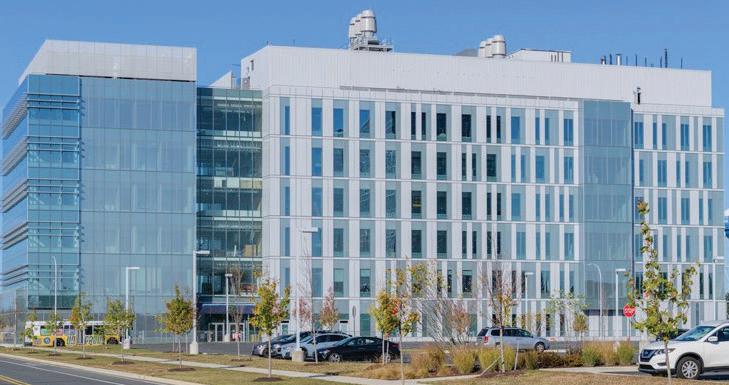
Assistant professor Catherine Fromen was awarded a $2 million grant from the Na tional Institutes of Health Maximizing Investigator’s Research Award program to better understand how organ-protection mechanisms work to improve the delivery of therapeutic medicines to the body.
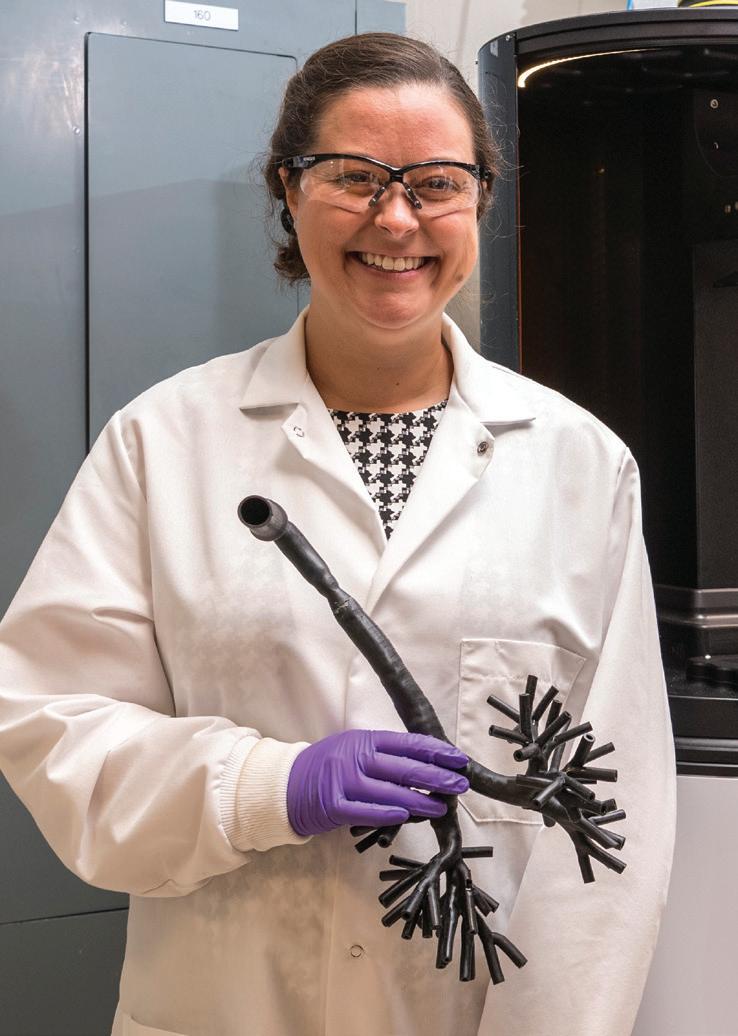
The five-year grant will support core areas of Fromen’s work focused on designing medicines that go to mucosal interfaces, such as inhalable vaccines for respiratory problems. She is particularly interested in knowing where these medicines need to go to overcome mucosal barriers, say in the lungs or the gastrointestinal tract, to better interact with immune cells.
“By better understanding how mucus and cells behave at these mucosal barriers, we can better design methods and medications to treat different problems at these protective barriers,” she said.
Read a Q&A with Catherine Fromen on her team’s simulation models to screen therapeutics and advance personalized medicine
Professor Yushan Yan, who leads the UD spinoff company Versogen, received the Electrochemical Society’s prestigious Carl Wagner Memorial Award for a new technology developed to decarbonize heavy, hard-to-abate industries by producing low-cost green hydrogen at scale.
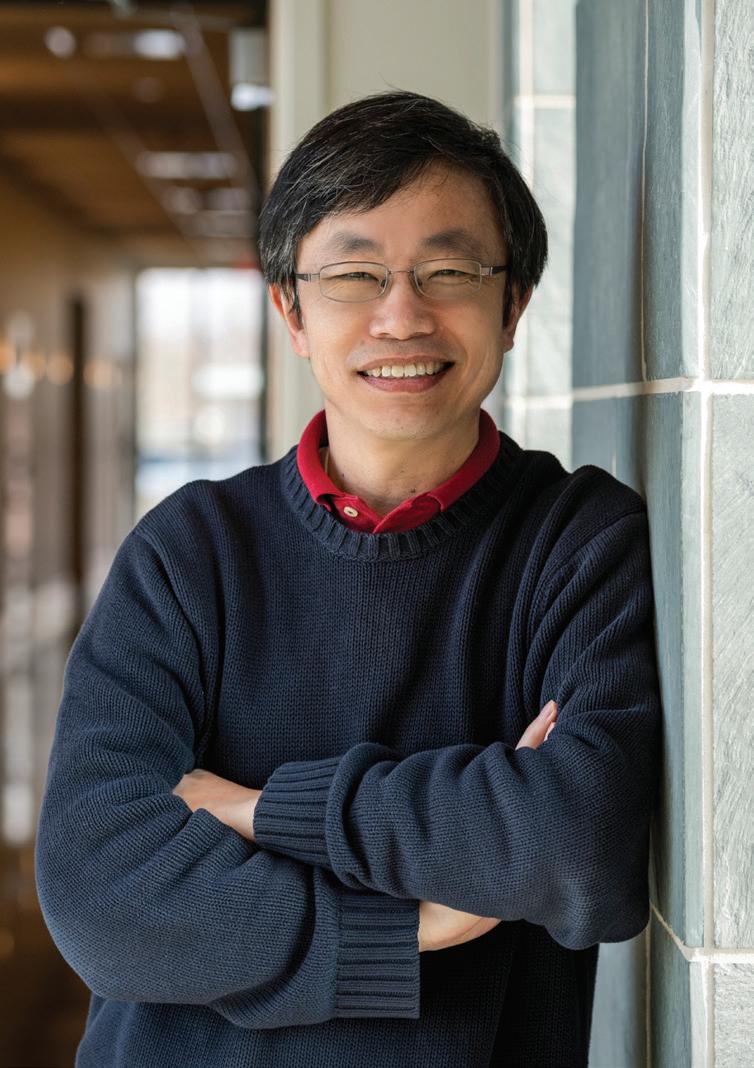
Versogen was also one of three start ups selected for the fourth cohort of the Shell GameChanger Accelerator (GCxN) program. GCxN is a collabo rative effort between Shell’s incubator program, Shell GameChanger, and the U.S. Department of Energy’s National Renewable Energy Laboratory. The highly selective program provides participating companies access to financial resources — including up to $250,000 in non-dilutive funding —
state-of-the-art facilities and worldclass technical experts.
“Versogen’s latest expansion into elec trolyzers is driven by the fast-growing business opportunities in green hydro gen for deep carbonization of sectors of our economy beyond transportation,” said Yan. “Our cohesive team shares a vision to become the global leader in leveraging the sustainability and versatility of hydrogen to achieve a carbon-neutral society.”
Yan’s research group is currently using its patented membrane technologies to advance other fuel cell technologies, as well, including a direct air capture method for removing carbon dioxide directly from the air.
Smarter models, smarter choices
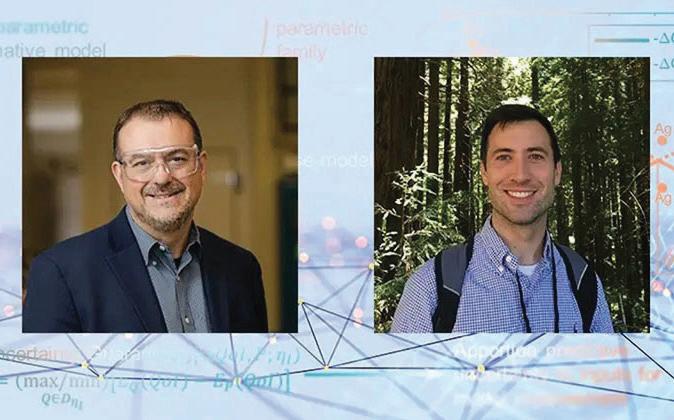
A co-authored paper in Science Advancesby Professor Dion Vlachos, director of UD’s Catalysis Center for Energy Innovation and doctoral student Joshua Lansford details a new approach to artificial intelli gence that builds uncertainty error, physical laws, expert knowledge and missing data into its calculations and leads ultimately to much more trustworthy models.
The team’s new mathematical framework provides powerful ways to analyze data, study materials and complex interactions and tweak variables in virtual ways instead of in the lab. Their new method of model design could greatly enhance work in renewable energy, battery technology, climate change mitigation, drug discovery, astronomy, economics, physics, chemistry and biology, to name just a few examples.
UD’s Feng Jiao, the Robert Grasselli Development Professor of Chemical and Biomolecular Engineering and a leader in the field of carbon capture and utilization, has received two Department of Energy (DOE) grants to advance technologies for carbon capture and utilization through catalysis.

Jiao is the principal investigator of a $2.5 million award from the DOE’s Office of Energy Efficiency and Renewable Energy Bioenergy Technologies Office to design a reactor to produce formic acid from carbon dioxide without a purification step. Inside the reactor, electrically charged particles move across membranes and layers and combine to form acid molecules that can then be collected and used.
The paper describes how the new mathematical framework works in a chemical reaction known as the oxygen reduction reaction, but it is applicable to many kinds of modeling.
“If you want to make a more active catalyst, you need to have bounds on your prediction error,” said Lansford. “By intelligently deciding where to put your efforts, you can tighten the area to explore.”
Jiao is also using a $1 million grant from the DOE’s Office of Fossil Energy to develop a two-step electrochemical process to produce ethylene and acetic acid from carbon dioxide emitted from coal-fired power plants. His team has already demonstrated that their novel reactor works, but are now attempting to increase the scale of the system by about 100 times its original size, eventually bringing the novel technology closer to commercialization.
“Uncertaintly is accounted for in the design of our model. Now it is no longer a deterministic model. It is a probabilistic one.”
— Joshua Lansford
Associate professor Mark Blenner received the prestigious Young Investigator Award from the American Chemi cal Society for his work converting the plastic waste of soldiers in austere environments into a nutrient-rich food source and turning astronaut urine into useful products needed for space travel.
Blenner modifies yeast cells — the oleaginous kind which naturally produce fat molecules —so their inner fat-mak ing chemistry can be harnessed to make other, fat-like molecules, including chemicals used in food, nutraceuti cals and a wide variety of materials.
Supported by a $2 million grant from the National Institutes of Health, Blenner is also investigating the possibility of modifying yeast strains to brew molecules used in many pharmaceuticals. And next he hopes to use yeast to synthesize chemicals that would attract lantern flies to traps.

“There aren’t many limits to what we can get biology to do for us,” he said.
When two become one
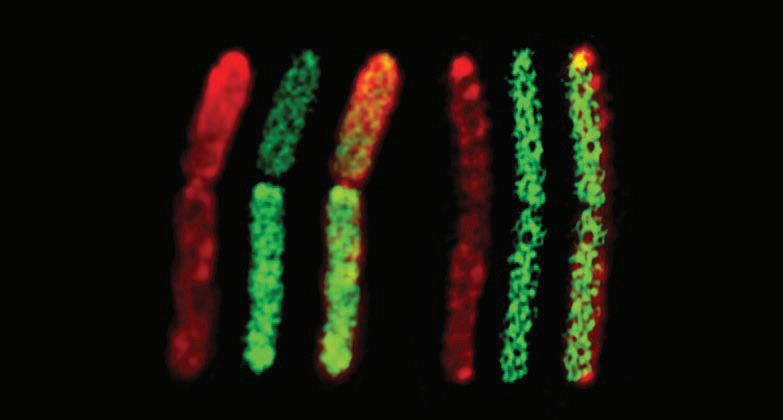
An unprecedented observation by a UD research team that organisms can exchange material and lose part of their own identity in the process has the potential to shed light on unexplained phenomena affecting human health, energy research, biotechnology and more.
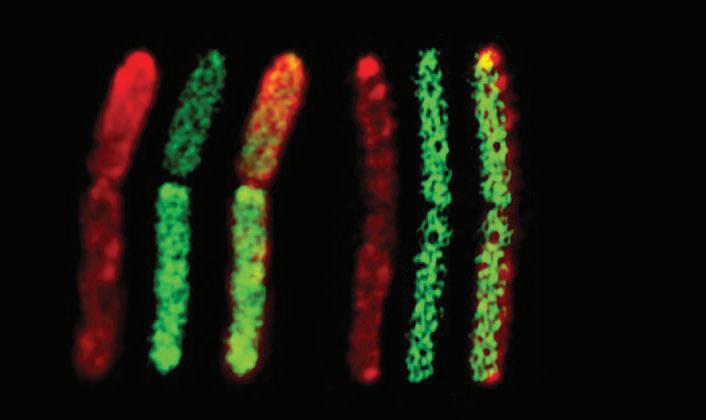
Led by Eleftherios (Terry) Papoutsakis, UD’s Unidel Eugene Du Pont Chair of Chemical and Biomolecular Engineering, the team found that bacteria from different species can combine into unique hybrid cells by fusing their cell walls and membranes and sharing cellular contents, including proteins and ribonucleic acid (RNA).
In studying interactions between Clostridium Ijungdahlii and C. acetobutylicum, they observed that the two species of bacteria worked together in a syntrophic system, producing metabolites mutually beneficial to each other’s survival. Previous researchers had observed that bacteria could exchange some material through nanotubes, but the combination into hybrid cells was unexpected.
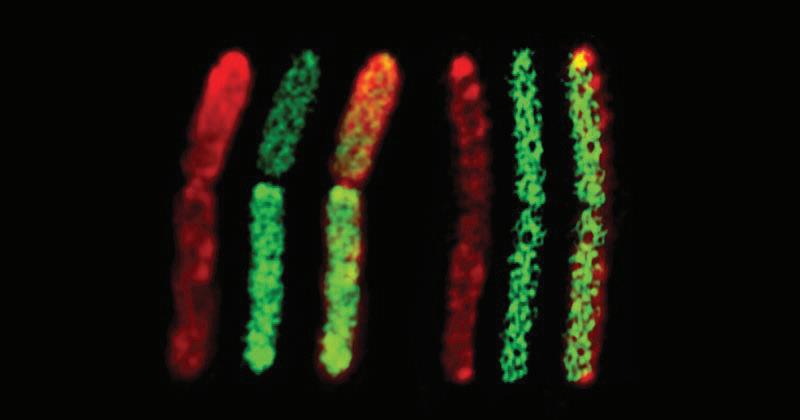
“They mix their machinery to survive or do metabolism, and that’s kind of extraordinary, because we always assumed that each and every organ ism has its own independent identity and machinery,” said Papoutsakis.
The team’s findings, supported by the Army Research Office and the U.S. Department of Energy, may influence understanding of the evolu tion of biology because once bacterial species share machinery, they can evolve together instead of only evolving on their own.
The discovery was reported in the American Society for Microbiology journal mBio.
Flight engineer Thomas Pesquet of the European Space Agency works on the colloid experiment inside the Microgravity Glovebox on the International Space Station.

Using zero gravity of space
A series of experiments designed by UD’s department chair of chemical and biomolecular engineering Eric Furst and now being conducted by a team of astronauts on the Inter national Space Station could potentially lead to the development of never-before-seen colloids for use in next-generation electronics.
Colloid experimentation on Earth has led to advancements in many commercial products, including paint, milk, ink and toothpaste to name a few. But Earth-bound investigations can only go so far due to the pesky reality of gravity.
“The Space Station experiments allow us to take that part of the physics out of the equa tion and say: ‘What does the general phenomenon of self-assembly look like when we don’t have this gravity thing?” said Furst.
For five years, he and his students synthesized new colloid particles and created original shapes for existing colloid particles — in other words, they reinvented the microscopic “LEGO.” The samples took off from Florida’s Kennedy Space Center onboard SpaceX’s 22ndCommercial Resupply Mission in June for manipulation under a microscope using magnetic fields to see what structures form. Hundreds of gigabytes of data are being sent back to Earth via a space capsule for analysis.
This intergalactic endeavor — the fourth for the UD department chair and self-described “space nut” — looks specifically at the way heat and light move through the colloid sam ples in space. The science, he said, could potentially improve the way we engineer display screens on electronic devices or improve the function of coatings used in actuators.
“Knowing my samples are on the Space Station feels surreal.”
— Furst team member Hojin Kim, chemical engineering doctorate ’21
CAMPUS COMMUNITY REMEMBERS CHEMICAL ENGINEERING PROFESSOR, FORMER DEANBABATUNDE A. OGUNNAIKE, WILLIAM L. FRIEND CHAIR OF CHEMICAL ENGINEERING AND FORMER DEAN OF THE COLLEGE OF ENGINEERING AT THE UNIVERSITY OF DELAWARE, DIED ON FEB. 20, 2022.
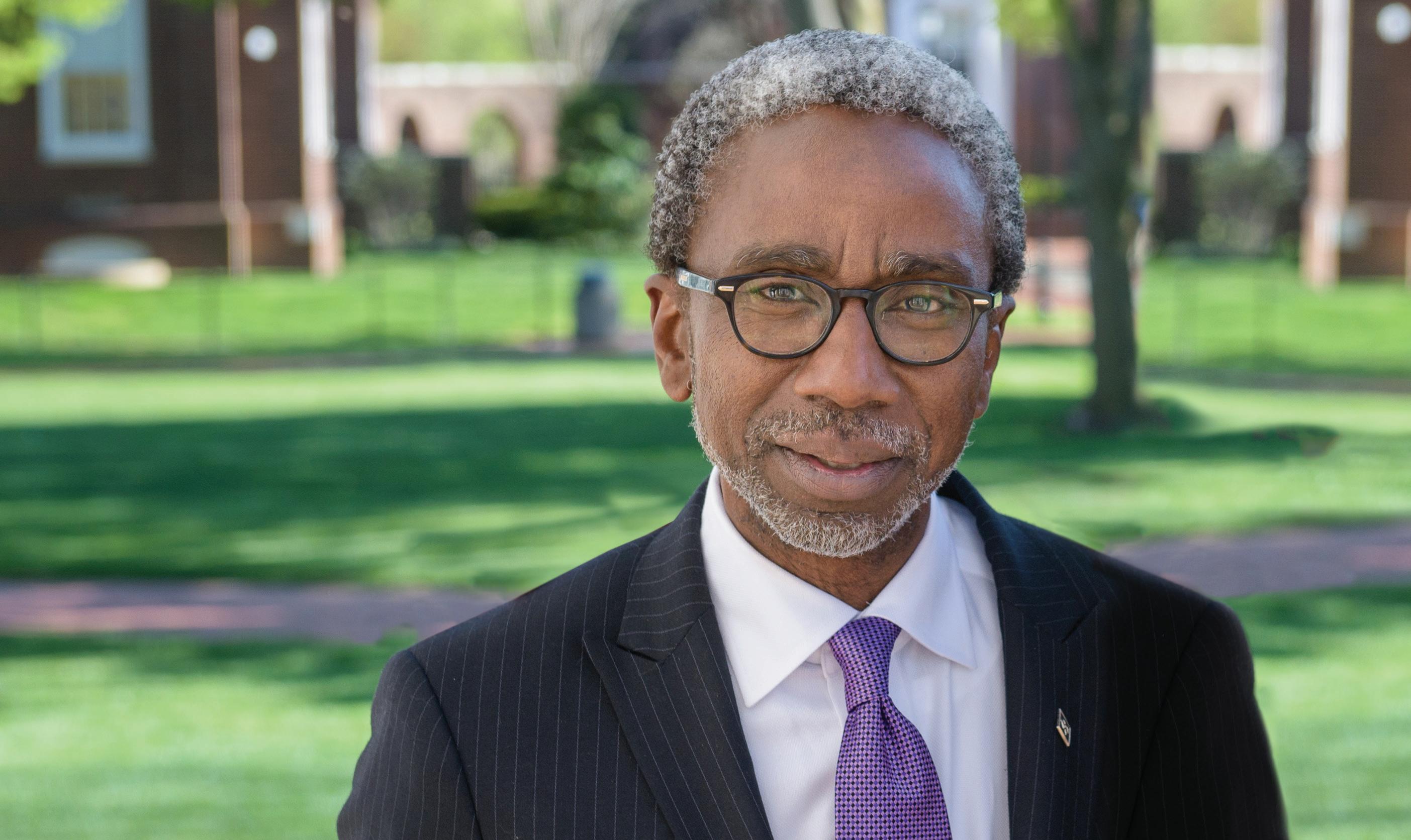
"The passing of Tunde is a tremendous loss for our whole community, and Eleni and I join the entire University of Delaware in ex pressing our grief and condolences to his wife, Anna, and their family and many friends," said President Dennis Assanis. "Tunde was a brilliant scholar, a passionate teacher, a dedicated leader, a talented poet and a terrific human being. In my office, I keep a framed copy of the beautiful poem, titled 'Dawn at the Well of Inspiration,' that Tunde composed and delivered at my inauguration ceremony in 2016, and I absolutely treasure it. I will remember Tunde forever."
A native of Nigeria, Dr. Ogunnaike earned his bachelor’s degree in chemical engineer ing from the University of Lagos, Nigeria in 1976. He went on to receive a master’s degree
in statistics and doctoral degree in chemical engineering from the University of Wiscon sin-Madison, in 1981.
He spent six years as an assistant professor at the University of Lagos prior to joining the DuPont Co. in Delaware in 1989, where he pursued a successful 13-year research career.
Dr. Ogunnaike joined UD as an adjunct professor of chemical engineering in 1996. He subsequently became a full-time professor at UD in 2002 and was appointed William L. Friend Professor, a named professorship, in 2004. He served as dean of the College of Engineering from 2011 to 2018, following posts as deputy dean (2010) and interim dean (2011) in the college. He also was a professor in the Delaware Biotechnology Institute.
Additionally, he was an affiliated faculty member at the African University of Science and Technology, Abuja, since 2008, and had been a visiting professor at the University of Wisconsin-Madison.
Highly esteemed in his field, Dr. Ogunnaike was a member of the National Academy of Engineering, the Nigerian Academy of Engineering and the National Academy of Inventors, and a fellow of the American Association for the Advancement of Science, among many other honors.
“Our college lost a pre-eminent scholar, col league and leader in the passing of Babatunde Ogunnaike,” said Levi Thompson, dean of the College of Engineering. “Many of us counted him as a friend and mentor. Personally, I came to appreciate his wisdom and wit. On a number of occasions, Tunde provided the en couraging words needed to help me through a difficult situation. I will miss his spirit.”
Dr. Ogunnaike distinguished himself both as a scholar and practitioner. He was an expert
in process control, modeling and simulation, systems biology and applied statistics. He possessed a robust knowledge of both indus trial and academic applications of chemical engineering. For example, Dr. Ogunnaike’s model-based process control advances, which he developed while at DuPont, today affect several commercial processes. Equally, his textbooks have been used to educate and train thousands of engineers across the globe in systems control and instrumentation.
Eric Furst, chair of the Department of Chemical and Biomolecular Engineering, said, “Professor Ogunnaike was a remarkable person to know and to work alongside. He was a friend, a mentor, a tremendous scholar and an enormously dedicated and inspiring teacher. His own personal standards held us to a high bar of work and, at the same time, collegiality.”
In addition to being an accomplished engi neer, Dr. Ogunnaike was also a poet. Prior to arriving in the United States to attend school, as a 21-year-old, he contributed words as part of a competition that were later used in the Nigerian national anthem.
On learning of his death, the Daily Post in Nigeria reported on Feb. 22 that Nigerian President Muhammadu Buhari noted that Dr. Ogunnaike’s contributions to the national anthem “showed his patriotism and dedi cation to the wellbeing of the nation in the living words that daily reinforce the faith and spirit of Nigerians” … and that “as a scholar and administrator, Ogunnaike’s long hours of research, spanning into years, enhanced knowledge and understanding, and prepared generations for greater works.”
Over his nearly 40-year career, Dr. Ogun naike worked tirelessly to advance the field of engineering, at UD and elsewhere. Rachel Segalman, Edward Noble Kramer Professor and chair of chemical engineering at the Uni versity of California, Santa Barbara, noted, “Tunde was a long-time member of our Engi neering Advisory Board, always present with a helpful suggestion and warmth for faculty, staff and students.”
Dr. Ogunnaike also was a dedicated alumnus of University of Wisconsin-Madison, his alma mater, where he served on the chemical and biological engineering advisory board.
“Tunde was a member of our family and noted for his tremendous service to our de partment and to the field. He was always able to contribute to any discussion with a kind confidence that I found inspiring,” said Eric Shusta, Howard Curler Distinguished Profes sor and R. Byron Bird Department Chair of Chemical and Biological Engineering.
Most recently at UD, Dr. Ogunnaike served as director of the Grand Challenges Scholars Program, a framework that allows UD under graduate engineering students to explore and immerse themselves in pressing societal issues, such as climate change, renewable energy and cybersecurity, through academic and extra curricular activities.
He was equally adept at pushing forward the field that he loved on a national stage. In 2020, Dr. Ogunnaike served with leaders from other top universities on a National Academies of Sciences, Engineering and Medicine com mittee to set a vision for the next 30 years of chemical engineering research, education and industrial innovation. The study will serve as a guidepost as others in the field forge new ground in the decades ahead.
He was a steadfast supporter of the Univer sity, too. As Delaware Diamonds Society donors, Dr. Ogunnaike and his wife, Anna, supported many initiatives at UD, includ ing Engineers Without Borders, Resident Ensemble Players and research in the College of Engineering. Their support for Harker Lab is recognized with a bench that includes a name plaque in memory of his and his wife’s parents.
In 2018, the University community estab lished the Babatunde Ogunnaike Global Engineering Student Enrichment Fund in honor of Dr. Ogunnaike's service as dean of the College of Engineering. It provides finan cial support for engineering students desiring to incorporate a global component to their educational experience through international travel, student research with a global or in ternational focus, and international academic
conference attendance/presentation, intern ships, venture development opportunities or service trips, such as through Engineers Without Borders, among other things.
At its December 2021 meeting, the Univer sity’s Board of Trustees awarded Dr. Ogun naike the Medal of Distinction, one of the highest honors the University can bestow.
More than anything, Dr. Ogunnaike took his role as an educator and mentor seriously. He dedicated time on his weekly schedule to advise and encourage students, even while serving as dean. With a twinkle in his eye, he would remind students and others that he came from a family of educators and that his mother was an English teacher. Proper grammar, whether in communication or academic literature, was expected. Errors were met with corrections and a patient explanation behind the change.
Upon graduation, Dr. Ogunnaike presented each doctoral student that he advised with an academic family tree, detailing his or her academic lineage. It was a treasured gift to help students mark their place in history, even as they pondered their future. Each tree be gan with the student’s name, followed by Dr. Ogunnaike as adviser, then Dr. Ogunnaike’s adviser and so on. The list included famous names familiar to mathematicians, physicists and engineers, including Gottfried Leibniz (1646-1716), a German mathematician cred ited with inventing calculus.
In a UDaily article detailing his 2012 induc tion to the Nigerian Academy of Engineering, Dr. Ogunnaike said that if his students only absorbed one lesson from him, he hoped that it would be to never stop learning or sharing their knowledge with others.
“Whatever you do for yourself is gone when you are gone. What you do for others’ lives on forever,” he said.
Arthi Jayaraman’s passion for polymer research and teaching has earned her an American Physical Society (APS) fellow ship, an Impact Award from the American Institute of Chemical Engineers (AIChE), and appointment as deputy editor of ACS Polymer Au(Gold), a journal published by the American Chemical Society (ACS).
“Polymers have non-trivial structures at different scales — Angstrom scale, nanoscale and micron scale,” she said. “To study these materials computationally, one has to select or develop the right model that captures that structure at the scale of interest. One model doesn’t fit all, and that adaptability is some thing my group works on.”
Jayaraman recently collaborated with UD’s Kristi Kiick, Blue and Gold Distinguished Professor of Materials Science and Engineer ing, to characterize protein-like polymers, predict their stability and thermodynamic be havior in specific conditions, and ensure they will behave the way Kiick and her team want them to behave in their biomedical research.
The APS cited Jayaraman’s “insightful development and use of molecular model ing, simulation and theoretical studies of structure and thermodynamics in polymer nanocomposites, conjugated polymer blends, nucleic acids and thermoresponsive peptide-polymer conjugates.
In the past year, Arthi Jayaraman, Centennial Term Professor for Excellence in Research and Education in the College of Engineering, has been named a fellow of the American Physical Society, won an Impact Award from the American Institute of Chemical Engineers and was appointed deputy editor of a journal published by the American Chemical Society.
“My research has me putting on different hats,” said Jayaraman, Centennial Term Professor for Excellence in Research and Education in UD’s College of Engineering, who leads a computational materials research lab as a professor of chemical and biomo lecular engineering and materials science.
“Sometimes I have to put on the physicist hat, sometimes the chemist hat, and always the engineering hat.”
Her computational expertise pulls many aspects of scientific inquiry together, but Jayaraman especially cherishes her collabora tions with two kinds of researchers — those who synthesize polymers and those who characterize the materials in a wet lab.

“Arthi is the complete package,” said Jan Genzer, the S. Frank and Doris Culberson Distinguished Professor of Chemical and Biomolecular Engineering at North Carolina State, who nominated Jayaraman for the APS fellowship. “She mentors her students and col laborates with a large group of people. Many of her collaborators are experimentalists and that’s very atypical for people who do simula tion and modeling. She is highly sought after by my colleagues who do experiments.”
Jayaraman is a past recipient of a Department of Energy Early Career Research Award, as well as young investigator awards from the AIChE and the ACS.
Three societies recognize Jayaraman’s contributions to physics, chemistry and chemical engineering
Four faculty members of the College of Engineering have been honored with named professorships in recognition of excellence and achievements in scholarship, teaching and service:
Thomas H. Epps, III, is now the Allan and Myra Ferguson Distinguished Professor of Chemical and Biomolecular Engineering. Epps, who holds a joining appointment in the Department of Materials Science and Engineering, is an expert in renewable and sustainable polymers, polymer membranes for batteries, polymer composites, polymers for drug delivery and nanoscale assembly of polymer templates.
He is the director of UD’s Center for Hybrid, Active, and REsponsive Materials (CHARM), a new National Science Founda tion-funded Materials Research Science and Engineering Center; director of the Center for Research in Soft Matter & Polymers (CRISP); and deputy director of the Center for Plastics Innovation, UD’s new Depart ment of Education-funded Energy Frontier Research Center.
Epps was named a 2021 POLY Fellow by the American Chemical Society’s Division of Polymer Chemistry and has been inducted into the American Institute for Medical and Biological Engineering.
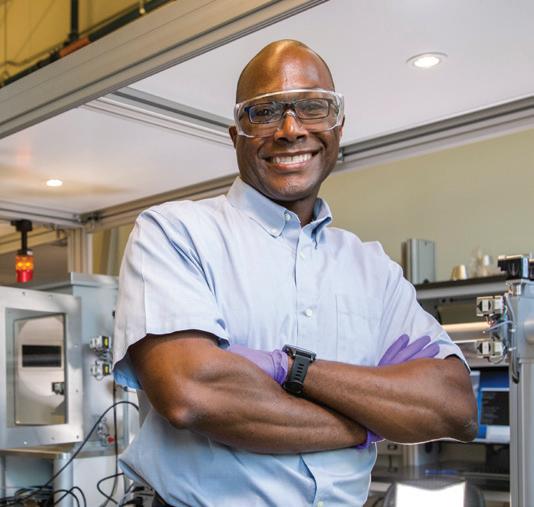
Millicent Sullivan is now the Alvin B. and Julie O. Stiles Professor of Chemical and Bio molecular Engineering. Sullivan, who holds a joint appointment in the Department of Biomedical Engineering, is director of UD’s innovative new master’s degree in biopharma ceutical sciences (see page xx) and co-director of the Multiscale Assessments Research Core in the new Delaware Center for Musculoskel etal Research.
An expert in nucleic acid delivery, as well as polymer and peptide biomaterials for regenerative medicine, she was awarded a 2021 Fulbright Future Scholarship from the Australian American Fulbright Commission and the Kinghorn Foundation.
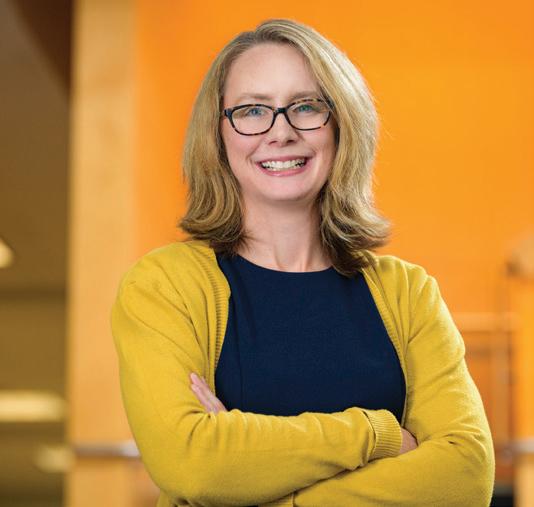
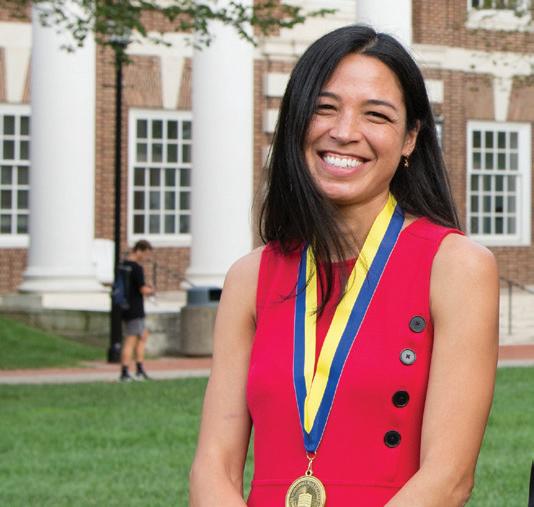
Dionisios Vlachos is now the Unidel Dan Rich Chair in Energy. He directs both the Delaware Energy Institute and the Catalysis Center for Energy Innovation, and is UD’s lead on the RAPID manufacturing institute.

A pioneer of the multiscale modeling field and the introduction of fundamental research in biomass, Vlachos is an expert in circular economy and waste derivatization, multiscale modeling and simulation, distributed (bio) chemical manufacturing, process intensifi cation and novel catalytic prediction, and kinetic modeling.
In 2021, he received the Exceptional Achieve ments in Catalysis award from the Catalysis Science and Technology Division of the American Chemical Society.
April Kloxin is now the Thomas and Kipp Gutshall Career Development Professor of Chemical and Biomolecular Engineering. Kloxin, who has a joint appointment in the Department of Materials Science and Engi neering, is an expert in biomaterials, stimu li-responsive materials, three-dimensional cell culture, tissue engineering and drug delivery.
She is co-director of an interdisciplinary research group in UD’s CHARM.
orm Wagner’s lifelong curiosity and delight in science, research and collaborative prob lem-solving have fueled an inventive career that has inspired many a colleague and student, drawn inter national recognition and now is distinguished with the University of Delaware’s highest faculty honor — the 2020 Francis Alison Award. Established in 1978 and named for the University’s founder, the Rev. Francis Alison, the award recognizes contri butions and distinction as both a scholar and an educator.
N
Wagner, who joined UD’s faculty in 1991, is the Unidel Robert L. Pigford Professor of Chemical and Biomolecular Engineering, a chair named for the University’s first Alison Award winner.
One of the many students Wagner has mentored — Matthew Helgeson, ‘09, now an assistant professor of chemical engineering at the University of Cali fornia - Santa Barbara — said Wagner’s delight in discovery was a memorable and powerful influence on him and many others.
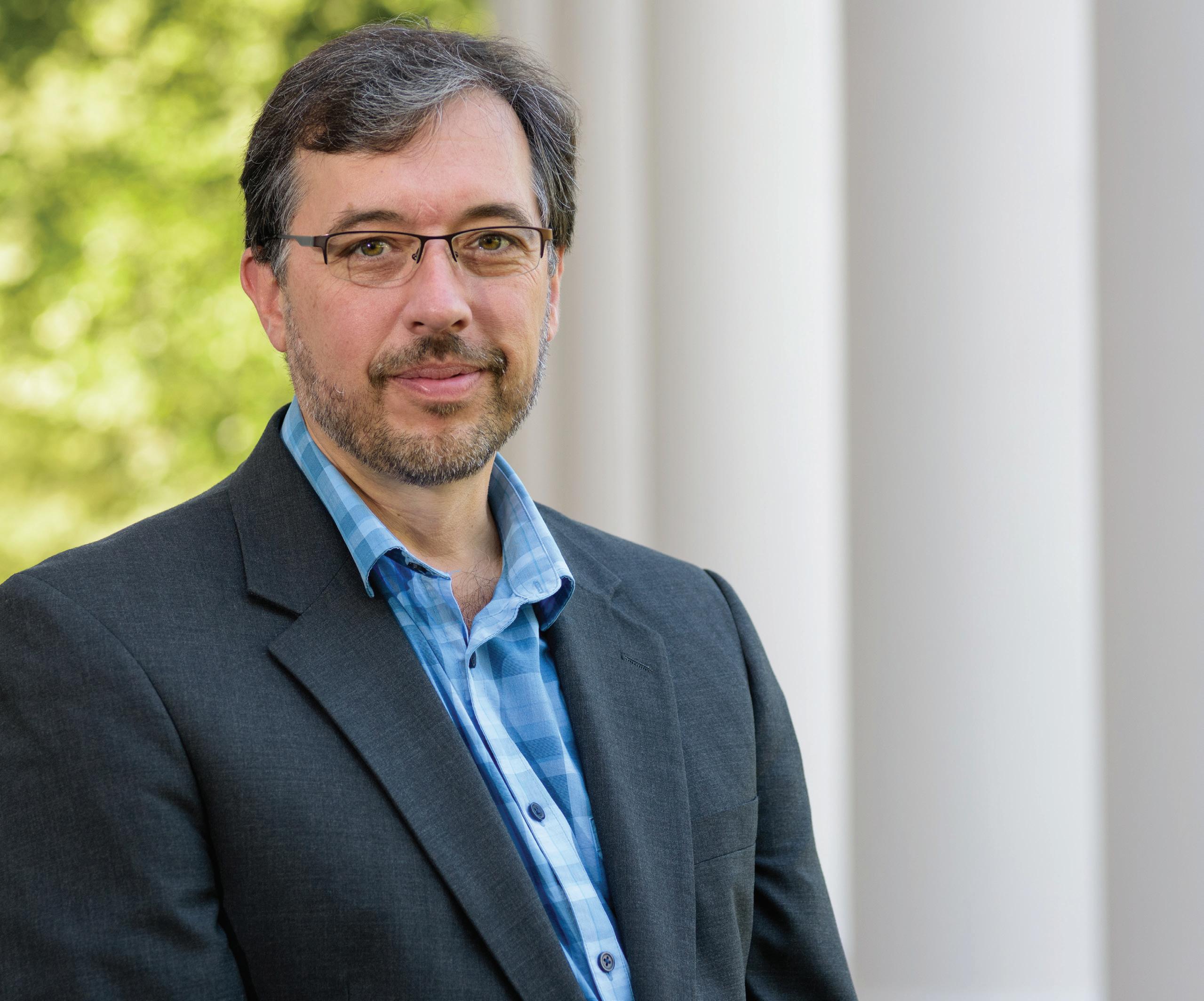
“I have often described Norm’s advising style as one in which he works himself into a euphoric frenzy over research progress, which then (hopefully) rubs off on the student,” Helgeson wrote in a letter of endorsement. “No result is too minor, no idea too small to escape his sense of excitement for his students’ work.”
Wagner’s pioneering work marks UD as a leader in rhe ology (the study of how complex materials flow) and the use of neutron scattering techniques, which allow study of complex fluids at the molecular level.
One of the most recognized inventions and 18 patents that have emerged from Wagner’s laboratory is Shear Thickening Fluid (STF), also known as “Liquid Armor,” invented in collaboration with Eric Wetzel, ‘95, a UD mechanical engineering alum and scientist at the U.S. Army Research Lab. When integrated into fabrics, STF provides “responsive and fascinating” new properties mak ing the fabric stronger or stiffer when under stress, and then returning to normal when that stress is gone. STF adds puncture resistance to Kevlar®, for example; it solves process problems for industry; holds promise for NASA’s future trips to the moon and Mars, and now provides new support in Reebok garments for female athletes, to name just a few applications.
Wagner, who has mentored 52 doctoral students, 32 postdoctoral researchers, nine master’s students and 37 undergraduate researchers, was elected to the National Academy of Engineers and the National Academy of Inventors, both in 2015, and is a Fellow of the American Association of Advancement of Science and the Neutron Scattering Society of America. He won the Bingham Medal of the Society of Rheology in 2014 and the Paul Si ple Memorial Award of the Army Research Conference in 2002. He is co-founder of the Center for Neuron Science, which has a cooperative research agreement with the U.S. Department of Commerce’s National Center for Neutron Research, and now leads an $11 million project for the National Science Foundation that will provide a neutron spin echo instrument at the National Institute of Stan dards and Technology (NIST), which will be accessible to all researchers and allow them to study the behavior of proteins and nanoparticles over time.
“True science is where you embark not knowing where the answer is,” Wagner said. “Sometimes you are surprised by the observations you see, the experiments you do or the theory you derive. It predicts something that isn’t what you expected or you see something that wasn’t expected. And that is the exciting part of science.”
— John F. Brady Chevron Professor of Chemical Engineering, California Institute of TechnologyWagner’s startup company, STF Technologies — co-founded in 2003 with UD alum Richard Dombrowski, ‘07 — is working with NASA to develop STF-infused materials that will better protect astronauts in future missions to the moon and Mars.
“Norm is one of the leading international figures in colloid science and the rheology of particulate systems, areas central to chemical engineering.”
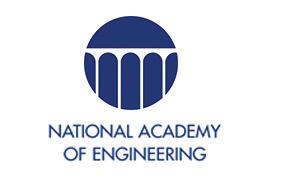
Two UD alumni and current leaders — Terri L. Kelly, ‘83, vice chair of the UD Board of Trustees, and Levi T. Thompson, ‘81, dean of the College of Engineering — have been elected to the National Academy of Engineering (NAE), among the highest professional distinctions accorded to an engineer.
Thompson, who is also the Elizabeth Inez Kelley Professor of Chemical Engineer ing, was selected for advances in catalysis and energy storage, entrepreneurship and academic leadership.
Kelly, the retired president and CEO of W.L. Gore & Associates, was selected for leadership in product development and commercialization by advancing manage ment practices that foster innovation.

“This is a tremendous honor for two distinguished members of the UD family,” said UD President Dennis Assanis, a member of NAE since 2008. “The election of Levi and Terri demonstrates, once again, the power of a UD education to trans form lives and put students on the path to success. While their NAE membership recognizes their contributions to engineering, entrepreneurship and innovation, we are so grateful for their ongoing contributions to the University as leaders in our community.”
The two are among numerous UD alumni in the NAE. The organization’s presi dent, John L. Anderson, ’67, is a UD alumnus.
Unidel Eugene du Pont Chair of Chemical and Biomolecular Engineering
Unidel Robert L. Pigford Chair in Chemical Engineering

William L. Friend Chair of Chemical Engineering
Dennis Assanis
UD President and Professor of Mechanical Engineering
David L. Mills
Professor Emeritus of Electrical and Computer Engineering
Dominic Di Toro
Edward C. Davis Professor of Civil and Environmental Engineering
Stanley Sandler
H.B. du Pont Chair Emeritus of Chemical Engineering
Thomas H. Epps, III, the Allan and Myra Ferguson Distinguished Chair of Chemical and Biomolecular Engineering, has been named to the American Institute for Medical and Biological Engineering (AIM BE) College of Fellows and was selected to the 2021 Class of Fellows of the American Chemical Society (ACS). He is also the recipient of the 2020 Percy L. Julian Distinguished Lecture and Award, given by the National Organization for the Professional Advancement of Black Chemists and Chemical Engineers.
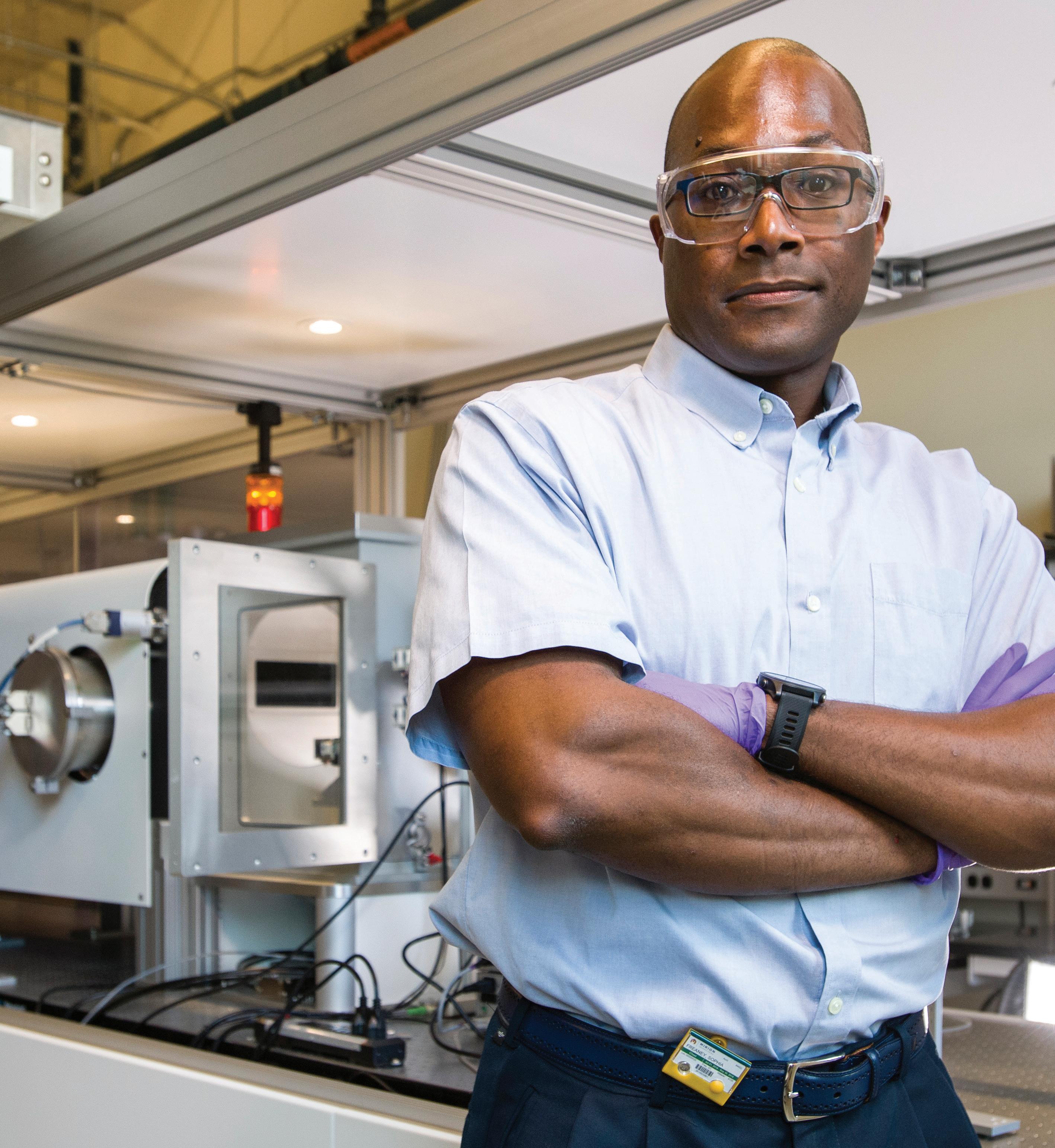
Epps is an expert in polymeric materials for a wide variety of appli cations. He co-directs the the $18 million UD Center for Hybrid, Active, and Responsive Materials (UD CHARM), which drives fundamental materials science research with the potential to enable critical innovations in biomedicine, sensing and more. He is also the deputy director for the Center for Plastics Innovation, an Energy Frontier Research Center (EFRC) that aims to upcycle plastic waste into useful products, such as next-generation polymers.
Epps is also the Thomas and Kipp Gutshall Professor of Chemical and Biomolecular Engineering and a professor in UD’s Department of Materials Science and Engineering. Through his research in UD’s Center for Research in Soft Matter and Polymers (CRiSP) that is leveraging funding from the National Science Foundation’s Growing Convergence Research program, Epps has made gains in designing new materials from renewable and sustainable feedstocks, including waste products such as lignin, a plant structural component that is a significant byproduct of the paper industry.
“Prof. Epps’ election as a Fellow of the AIMBE recognizes his tre mendous gifts toward understanding applying polymer materials to a diverse range of applications, including living systems,” said Eric Furst, Chair of the Department of Chemical and Biomolecular Engineering. “This work is relevant to engineering solutions to healthcare grand challenges, including the current pandemic.”
A major educational and outreach thrust of UD CHARM is to improve the diversity landscape at all levels of the academic and re search enterprise. The program includes part nership with two historically black colleges and universities — Delaware State University in Dover, Delaware and Claflin University in Orangeburg, South Carolina.
Epps named Fellow of both AIMBE and ACS, receives Percy L. Julian award

Millie Sullivan, a professor and the associate chair of Chemical and Biomolecular Engineering and a joint pro fessor of biomedical engineering, is researching chronic wound healing at the University of Melbourne with support from a Fulbright Future Scholarship.
An expert in biomaterials and drug delivery, Sullivan has spent the last decade honing her gene therapy concept to improve wound healing. The goal of her latest research project is to generate new biomaterials that will deliver genetic material to support cell growth, while creating a healthy environment to encourage recovery inside the wound. She uses hydrogel materials, which, at the molec ular level, are composed of a network of collagen bound with DNA-encoding healing factors to accelerate wound healing. Sullivan will further her research in Melbourne in a lab with unique production and processing methods for extracellular matrix proteins like collagen that will create unique microstructures for the hydrogels.
“The larger situation in the U.S. right now is that we are at a point where we hadn’t been at previously, where gene therapies are actually getting approved for clinical application,” Sullivan said. “When I started my career, this was not the case. I find this change in climate extremely inspiring because it shows that the larger environment is positioned to advance gene therapy products.”
Dionisios Vlachos, the Unidel Dan Rich Chair in Energy and Professor of Chemical and Biomo lecular Engineering and Physics and Astronomy, received the Exceptional Achievements in Catalysis award from the Catalysis Science and Technology Division of the American Chemical Society (ACS).
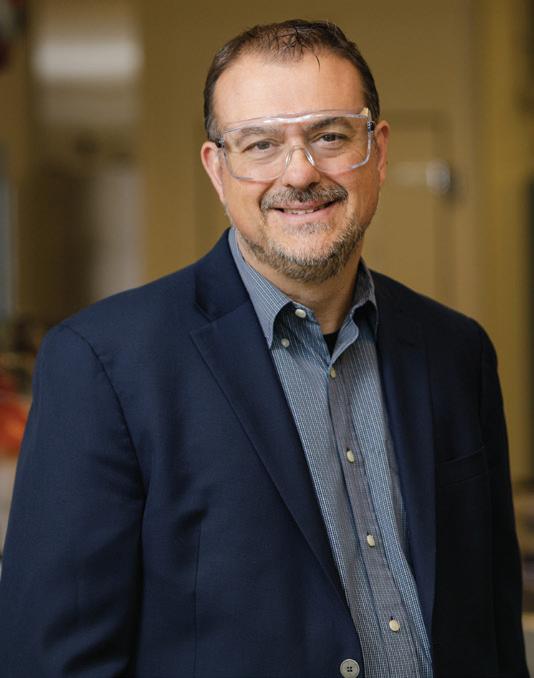
A pioneer of the multiscale modeling field and the introduction of fundamental research in biomass, Vlachos also directs the Delaware Energy Institute,
the Catalysis Center for Energy Innovation based at UD, and is the university’s lead on the RAPID manufacturing institute. His research focuses on cir cular economy and waste derivatization, multiscale modeling and simulation, distributed (bio)chemical manufacturing, process intensification and novel catalytic reactors, renewable fuels and chemicals, catalyst informatics and in silico materials predic tion, and kinetic modeling.
Patrick Roland Salvador Aceves
Ahmad Afiq Ahmad Kamal
Ibrahim Alelaiw
Ali Mousa A Alkhater
Abdulmalik Othman A Alsantely
Khalil Khalid Al-Toubi
Meshal Altowairgi
Chandler Amato
Alice Amitrano
Alexander Attard
Lucas Attia
Tianyi Bai
Robert M Bello
Stephen Bolton
Avery J Boyer Luke Brusse Ryan Buchser Harrison John Chuma Mitchell Daneker Andrew Danielson Amanda Leslie Edwards Nathan Edwards James Ervin Brittany Georges Mia Giannattasio
Xijing Gong
Joseph Anthony Gonzalez
Tyler Matthew Grau Joseph James Healy
Juan Marcelo Hinojosa Davalos
Erin Kathleen Hogan
Hadi Mohammad Homaidi Amanda Rose Hopkins Jason Houser
Meghana Inabathini Jack Andrew Inman Daksh Badal Jain Shiyan Jin Farhan Khandker Logan Young Kim Jeremy Patrick Laubsch Qirun Li
Jordan Kyle Martzall Sean Patrick McEvoy Michael Murphy McKenna Jenna Nicole McKlusky Adeline Mireille Miller Kathryn Abigail Miller Keith Morgan Thomas Mortimer Azwani Syakirah Norhisham Premal Patel
Jordan Peel
Emma Lindsay Peterman Zachary James Pfeifer
Paula A. Pranda Fox Holden Pratzner Joseph Pritchard Riley Prosser
Christine Marie Rogers Jackson Schade
Azeem A Sharief Paige Shumskas Gustavo Haisser Silveira Afsatu Simpson John Sinclair Kaylie Anne Slomkowski Mya Soukaseum Dylan Thomas Southwell Eric Stevenson Ryan Terrell Matthew Edward Ueckermann Sai Mahit Vaddadi
Xiaoran Wang Ethan Wang Joseph Warrington David Zimmerman
Michael Abramovitch
Jacob Anibal Patrick Bresnahan
Kamil Charubin
Soumili Chattopadhyay
Tai-Ying Chen
Pierre Desir
Elvis Ebikade
Emily Hartzell
Emily Jeng Hojin Kim
Byung Hee Ko
Haesoo Lee
Arnav Malkani
Ummu Meric Anxhela Sinani
Michel George Wessels
Graduate School
Univ of Delaware 4+1 BioPharma (5) Univ of Delaware 4+1 MSEG (2)
Carnegie Mellon
Drexel University
Johns Hopkins University MIT (2)
Penn (2)
Penn State University
Purdue University
University of California Santa Barbara
University of Colorado Boulder University of Pennsylvania University of Texas Austin
Industry
Actalent
Air Products
Amazon Brewer Science Carbon Reform
Catalent Pharma Solutions Catalysis Center at UD Chemours (2)
Cognizant Life Sciences
Deloitte (3)
DuPont (2) Emerson Controls Epic
Johnson Matthey (2)
LabWare
LaMotte Merck (2)
Petronas (2)
Photonics
Veeva Systems
W.L. Gore & Associates
Rebecca Beswick is a junior studying chemi cal engineering with an interest in the energy sector and the challenges of transitioning to renewable energy.

One of her faculty mentors, Prof. Yushan Yan with the Department of Chemical and Biomolecular Engineering, said Beswick is among the best undergraduate researchers he’s worked with so far.
“She thinks very logically, is very independent and her maturity is way beyond her age,” Yan said. “It has been fun, and a privilege to have worked with her.”
Since she came to UD, Beswick has published three papers and secured an internship two summers in a row at the National Renewable Energy Laboratory in Golden, Colorado. She’s hoped to become a Goldwater Scholar for quite some time, she said.
“It is the elite research scholarship for under graduate students,” she said. “It’s recognition for the work that I’ve put in, and it is an honor.”
Honors chemical engineering student Jack son Burns hopes to use his Goldwater Schol arship to make science more accessible and sustainable. He plans to eventually become a professor and create open-source simulation projects to replace expensive experimen tation. His research merges principles of chemical engineering, organic chemistry and computer science.
“Chemical engineering and computer science teach you two different ways to solve problems,” Burns said. “Both are extremely valuable, especially when you start to put them together.”
As an undergraduate researcher, Burns works in the laboratory of Donald Watson. The Watson lab works on improving the efficiency of chemical reactions used to make several substances containing carbon-nitrogen bonds. Burns developed visualization software for experimental results and created a program that helped the team analyze the data.
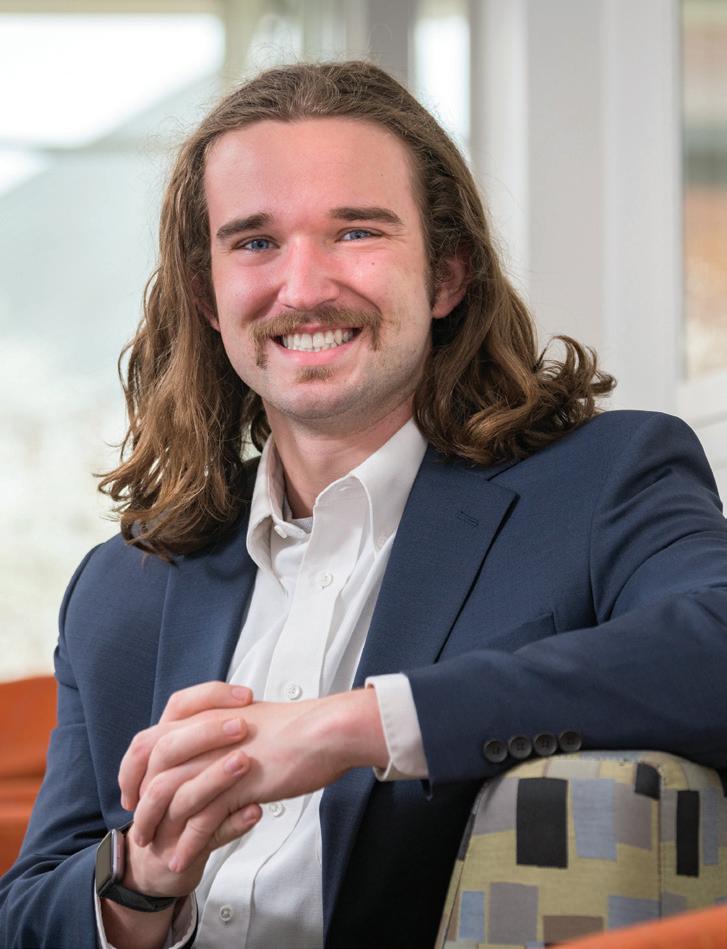
Ishika Govil is a junior double majoring in chemical engineering and computer sci ence. Combining that with her interest in mathematics, Govil said she’s fascinated by how computational research can accelerate experimental research, eliminating the time and resources needed to go through typical trial-and-error processes.
Govil is now using that interdisciplinary approach in synthetic biology applications as she works in Aditya Kunjapur’s lab at UD.
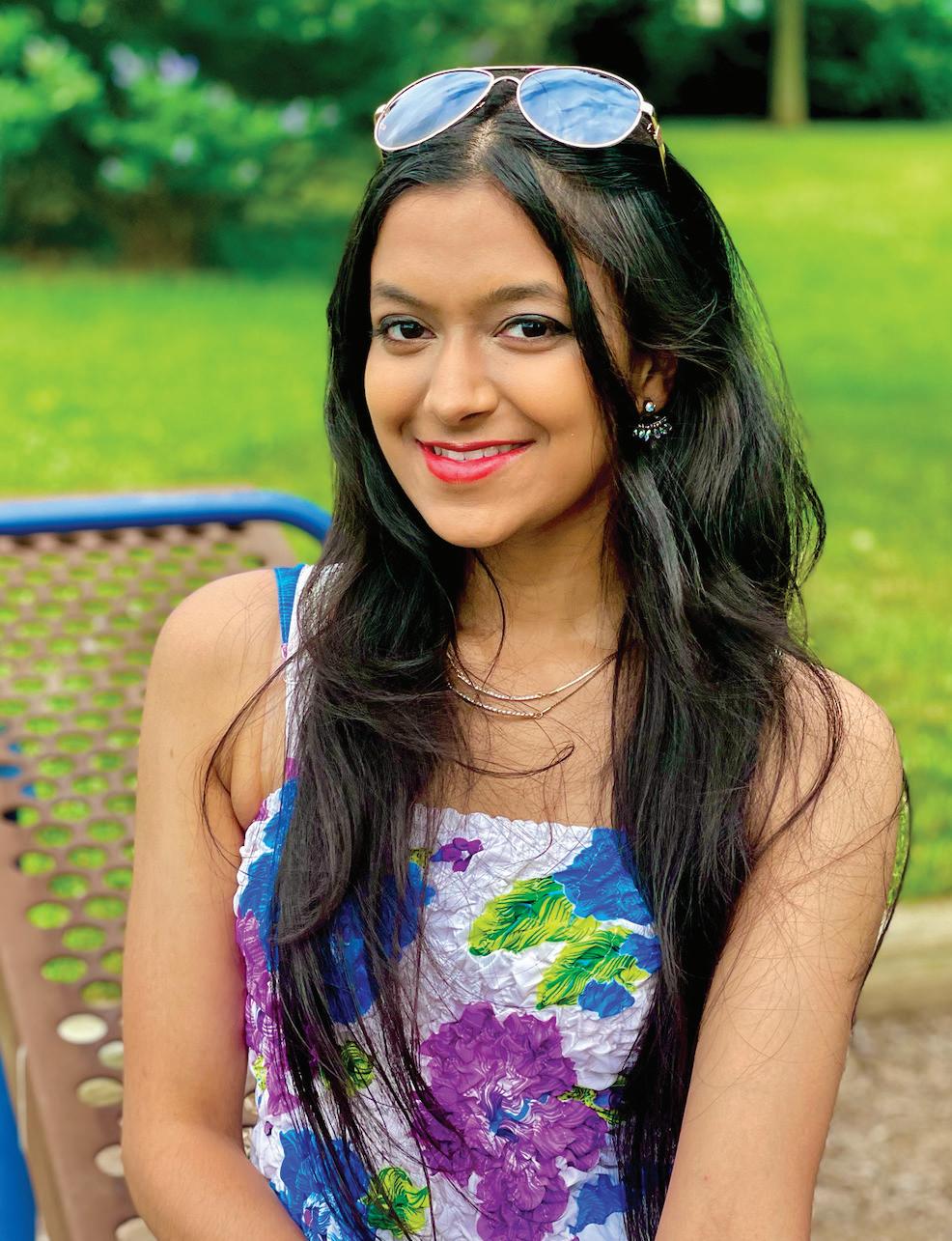
“There’s a lot of creativity that goes along with synthetic biology. It’s basically a limitless realm of combining different genes to create an organism with optimized biological sys tems to solve specific problems,” the 21-yearold said. “I’ve found that computation allows me to sort of play a role that might not be possible for a traditional synthetic biologist.”
Kunjapur, Govil’s mentor and an assistant professor in the Department of Chemical and Biomolecular Engineering, said Govil’s contributions to research work in his lab — both at the bench and computationally — has generated important insights and hypotheses through modeling protein structures.
Afsa Simpson, ’21, credits UD’s Resources to Inspire Successful Engi neers (RISE) program with helping her hit the ground running in her professional career as an analyst for Deloitte.

Simpson, who received a RISE scholarship, was actively involved in RISE through all four years at UD, interacting with a core group of engineering students through monthly meetings as well as small group and academic counseling sessions.
“When I was an underclassman, there were always older chemical en gineers who would give advice and give help with some of our courses,” said Simpson. “As an upperclassman, it was the same thing in the other direction with me offering advice to the younger students. That was the best part of the RISE program for me.”
To help expand her skills in computing technology, Simpson and two fellow UD students and RISE participants participated in the Brookhaven National Laboratory Computational Science Training Course at the start of her senior year. A portion of the financial support the RISE program receives is from the Louis Stokes Alliance for Minority Participation, which is a grant from the National Science Foundation. Simpson said that she had done a lot of coding and com puter science work by virtue of being an engineering student at UD, but this course expanded her knowledge, focusing not only on coding, but also on computing in a broader sense.
“Companies are looking for people who can do computing software rather than people who can only do coding,” said Simpson.
UD junior Eduardo Nombera-Bueno, an Honors student double majoring in chemical engineering and materials science and engineer ing, was chosen from a competitive pool of 412 applicants across the nation by the prestigious American Chemical Society to become of 156 ACS Scholars.
The aspiring engineer credits his success thus far partly to the support network he had growing up — people who nurtured his potential and helped buffer him against the biases of others — as well as the inclu sive community he has found at UD.
“I have never felt out of place here,” said Nombera-Bueno, whose fam ily moved to the U.S. from Lima, Peru for his father’s job when he was five. “I have a lot of mentors on campus who are people of color and the principal investigators I’m working with are both people of color. I feel like I’m in a place where I belong.”
In the summer of 2020, he joined the research group of Prof. LaShan da Korley in UD’s College of Engineering, exploring the synthesis and manufacturing of bio-derivable polymers. He also contributed to a re search project led by Korley and Prof. Thomas H. Epps, III, both who were ACS Scholars themselves. This project involves experimenting with plant-based building blocks that will be combined with products from plastics waste deconstruction in UD’s Center for Plastics Innova tion to develop sustainable polymeric materials.
For all of the opportunities afforded to him at UD, Nombera-Bueno spends a lot of time giving back to the University community. He con ducts tours of the College of Engineering, serves on a diversity, equity and inclusion board for his major, and frequently mentors incoming Blue Hens — often from underrepresented groups.

Goldwater Scholarship
Jackson Burns (‘22), Rebecca Beswick (’23) and Ishika Govil (’23) were named a Goldwater Scholars.
NSF Graduate Research Fellowship Program
Emma Peterman ('21) and Lucas Attia ('21)
AIChE
Outstanding Student Chapter 2021
1st Place in the inaugural Chem-E-Cube Competition, November 2021
2021 Delaware Valley Section Zeisberg Research/Laboratory Report - Chandler Amato, Brittany Georges, Xiaole Gu, Paige Shumskas
Nolan Petrich’s poster placed 2nd in the Materials Science and Engineering division at the Annual AIChE Student Conference in November 2021
Sean Wirt’s poster placed 2nd in the Food/Pharma/Bio tech division at the Annual AIChE Student Conference in November 2021
American Chemical Society
Eduardo Nombera-Bueno ('23) was named one of 156 ACS Scholars in 2021.
As the junior student with the highest GPA in the major, Sean Wirt received the American Chemical Society Award in Chemical Engineering in 2021.
Society of Women Engineers
Ishika Govil ('23) - Anne Maureen Whitney Barrow Scholarship, $8000/year for 5 years
Center for Composite Materials at UD Riley Prosser received the Outstanding Senior Award in 2021
Tau Beta Pi Scholarship
Premanand Otilingham Sivakumar ('22) was one of 261 students in the US to receive a Tau Beta Pi scholarship. He received the Soden Scholarship.
Future Leaders in Chemical Engineering Symposium
Jacob Hewes ('23) was one of 24 students selected for the Future Leaders in Chemical Engineering symposium hosted by NC State.
UD College of Engineering Awards
Slocomb Award 2022 - Jackson Burns ('22)
Charles B. Evans Prize - Emma Peterman ('21) and Erin Hogan ('21)
Engineering Alumni Association Scholarship –Premanand Otilingam Sivakumar ('22) and Sean Wirt ('22)
Elbert C. Wisner RISE Corporate Friends Award Kristin Paragian ('21)
Department of Chemical and Biomolecular Engineering
Chemical Engineering Industrial Sponsors Scholarship Award - Ishika Govil ('23) and Jacob Hewes ('23)
Chemical Engineering Industrial Sponsors Senior AwardErin Hogan ('21)
Chemical Engineering Industrial Sponsors Undergraduate Research Award - Alice Amitrano ('21) and Paula Pranda ('21)
John R. Eagle Scholarship - Chandler Amato ('21) and Joseph Pritchard ('21)
Alexander F. Giacco Scholarship - Xijing Gong ('21) and Afsatu Simpson ('21)
Sylvia and Charles S. Joanedis Chemical Engineering Schol arship - Chandler Amato ('21) and Gustavo Silveira ('21)
Mr. and Mrs. James F. Kearns Scholarship in Chemical Engineering - Emma Peterman ('21) and Joseph Pritchard ('21)
Myrick Family Scholarship - Shiyan Jin ('21) and Paige Shumskas ('21)
Stanley J. Schechter Award - Jordan Peel ('21)
John Allen Thoroughgood Legacy Scholarship Jacob Hewes ('22)
NASA DE Space Grant Graduate Fellowship 2020/2021
Jennifer Mills
NSF GRFP Fellows Alexandra Oliveira and Brandon Vance
Teaching Assistant Award
Esther Roh, Sam Cassel, Alana Szkodny, Ian Woodward, Lucas Dunshee, and Max Cohen
TWFR Teaching Fellow Award Zachary Stillman and Alana Szkodny
University of Graduate Scholar Award Natalia Markewicz
ACS Excellence in Graduate Polymers Research Symposium
Xutao Shi
Department Teaching Fellow Bader Jarai and Emily Kolewe
Best Talk Prize, MRS Spring Meeting Philip Taylor
AIChE Catalysis and Reaction Engineering (CRE) division travel award
Matthew Journey
AIChE 2nd Place Talk: 8B Biomaterials Graduate Student Awards session
Paige LeValley
AIChE 1st Place - Catalysis & Reaction Engineering Poster Session (subsection: Reaction Engineering) Natalia Rodriguez
NIH F31 Pre-Doctoral Fellowship Katie Nelson
AIChE 2nd Place - Catalysis & Reaction Engineering Poster Session (subsection: Catalysis)
Elvis Ebikade
AIChE 3rd Place - Catalysis & Reaction Engineering Poster Session (subsection: Catalysis)
Max Cohen
NSF GRF Honorable Mention
Ian Woodward, Neil Butler, and Morgan Sulzbach
Saurabh Palkar Award
Zachary Stillman
Richard Wool Green Engineering Award; University Doctoral Fellowship; AIChE 8A Excellence in Polymer Graduate Research Symposium; 3M RISE Symposium
Arijiata Kulshreshrha
John Anderson, ‘67, UD alumnus and president of the National Academy of Engineering (NAE), received an honorary doctor of science degree at the May 28 Commencement celebrating the academic achievement and determination of 2021 and 2020 graduates.

A lauded engineering researcher, Anderson’s influ ential work in areas such as electrokinetic phenomena, electrophoresis of complex particles and transport in porous media and gels has been widely published. He has been awarded a Guggen heim Fellowship, the Acri vos Award for Professional Progress from the Ameri can Institute of Chemical Engineers, and the National Engineering Award from the American Association of Engineering Societies.
He is a Fellow of the Amer ican Academy of Arts and Sciences and the American Association for the Advance ment of Science. In 2014, President Obama appointed Anderson to the National Science Board, which is
charged with establishing the policies of the National Science Foundation. Ander son also acted as advisor to Congress and the President on issues related to science and engineering.
Anderson has retained a strong connection to UD and the Delaware communi ty. He and his wife Patricia Sieman Anderson, ‘67, are avid supporters of Delaware Athletics, honoring the lega cy of her father, Bob Sieman, former UD athlete, coach and administrator. The two also established the John L. and Patricia Sieman Ander son Engineering Scholarship to support engineering stu dents with financial need.
Anderson serves on the Executive Committee of the President’s Leadership Coun cil for Delaware First: The Campaign for the University of Delaware, where his exper tise is essential in UD’s effort to raise funds and shape the University of the future.
He was elected to the NAE in 1992, and has contributed in numerous ways, including
chairing committees that researched techniques for detecting improvised explo sive devices, interrupting the IED delivery chain and identifying and responding to potential terrorist attacks that involve chemical explo sives. Now as the academy president, his top priorities include engaging the business community in the work of the NAE, helping to bridge gaps between entrepreneurs and large companies, and bringing more women and underrepresented minori ties into the engineering profession.
In presenting the honorary degree of Doctor of Science to Anderson, Chairman of the UD Board of Trustees John R. Cochran credited Anderson with devoting his life to engineering education. Said Cochran, “You have worked to ensure that engi neering research, knowledge and accomplishments are used for the common good.”
Ashish Lele working to bring green and clean technology to India and beyond
Hydrogen is so hot right now. And not just because this highly combustible gas burns at around 2,000 degrees. The chemical element is also trending among developed countries with a vested interest in combating climate change.
India, the world’s third-largest emitter of planet-killing carbon, is hoping to lead this change through the recently announced National Hydrogen Mission. Creating the roadmap for arriving at such a clean and independent energy future is UD alumnus Ashish Lele, ‘93, director of India’s National Chemical Laboratory.
“I owe much of my career to UD,” said Lele, who has six patents to his name. “I learned from the University that, in order to solve tough problems, you have to go back to the science fundamentals. In recent days, I have very much relied on these fundamentals.”
A native of Mumbai, Lele came to his beloved college town of Newark, Delaware in the early 90s. After graduating with his doctoral degree in chemical engineering, he returned to Prune, India, where he studied polymers and designed new iterations with original applications. For one project, inspired by mussels and other adhesive underwater crea tures, he developed a glue that works while wet. The invention may one day help surgeons put bodily tissues back together without the use of dissolvable stitches, which can cause a negative reaction in some patients.
Lele also spent a portion of his career studying the flow dynamics of polymers. His research helps tens of thousands of companies decide what type of plastic molecules will be
best for conversion into desired products, such as shampoo bottles, potato chip bags or protective films for an iPhone.
“These companies have huge reactors where they make millions of tons of a given material, so putting the right quality of plastic in that asset is critical,” Lele said. “Mistakes are going to be very expensive. You have to get it right the first time.”
Now after a three-year stint in the private sector, Lele is back at India’s National Chem ical Laboratory — this time in charge and working on what he calls a passion project: clean energy.

His work involves refining and scaling hydrogen storage, in which energy created by wind or sun can be used to send an electrical current through water, which separates the H (hydrogen molecules) from the H20. Later, these separated molecules can be recombined with water, which creates energy needed for powering everyday appliances and machines.
“We call hydrogen storage the Swiss knife of energy transmission, because it can be used to do so many things,” Lele said. “You can heat residential spaces, you can make steel with fewer emissions and you can run vehicles with less pollution.”
Lele still relies on the foundational principles he learned at UD. “I am not joking when I say I still go back to my graduate school notes,” he said. “UD will always be a part of me.”
AUSTIN EDISON M'61 passed away peacefully in January 2018, two years after having been diagnosed with acute myeloid leukemia (AML). Austin's son Matt writes that Austin had graduated from Oberlin College in 1958 with a BS in chemistry but, not wanting to be stuck in a lab, enrolled to earn an MChE at UD as he felt that it would be far more exciting. He completed his undergraduate and graduate work in 18 months – the hardest thing he had ever done. However, because of his degree he landed a phenomenal job with DuPont at Chambers Works in Jackson Lab working in the dyes business even before his thesis was completed, and it was as exciting as he had hoped. With his new job he was able to buy a red TR-3 Triumph two months out of UD in cash and then had a custom twin-masted 32’ sailboat built in Oxford, MD, a year later. He ended up staying with DuPont for 35 years, retiring early at 60 to focus on sailing the Atlantic, up and down the coast and across to Europe, either delivering private boats or racing them.
KATHRYN (KREEMER) CULVER '56 writes that she enjoyed her undergraduate years playing in the band and going to all the football games in the fall and concerts in the spring. Upon graduating, she was hired by the US Patent Office as a patent examiner and received her Patent Agent License after four years. In that role she found applications for improvements to nuclear reactors especially interesting. Kay was married for 55 years and raised three lovely daughters, and now has seven grandchildren and so far, eight great-grands. She now lives in a retirement community on Hilton Head Island, SC, and enjoys it very much. Kay was too modest to mention that she was the first woman to graduate from our program and that she generously hosted a reception for area alumni several years ago, which we enjoyed immensely.
WALT JEBENS '56 enjoyed a 31-year career with Esso/Exxon/ER&E, mostly in a number of refining supervisory and management positions in New Jersey. In the 1970's he also had two wonderful two-year assignments with Esso Eastern in Okinawa and Singapore with his wife, Gail, son, Steve, and daughter, Wendy. He took advantage of an early retirement program in 1986 for transition into residential real estate after doing some spare-time home renovation project work earlier. In 2004 Walt and family began a 13-year full-time vacation from New Jersey to live on a small lake in Centerville, Cape Cod, MA, enjoying a lot of golf, tennis and sailing. Due to Gail's health issues they moved to a CCRC in Durham, NC, in 2016, and
she passed away in 2018. Walt still enjoys tennis, gardening and socializing. His happiest days at UD were in Delta Tau Delta fraternity on S. College Avenue and he was sad when it closed down several years after his graduation. Walt says that the engineering training and thinking from UD still help him solve technical, social and personal challenges in day-to-day living. At UD, Exxon, and in his personal life, he never saw problems -- only challenges and opportunities.
STEPHEN WHITAKER M'56 D'59 retired from a very successful and productive academic career at UC Davis in 2003 and moved to the sparsely populated Mendocino coast of northern California. Work continues, however, and a new book entitled Material Balances for Chemical Reacting Systems (with Professors Cerro and Higgins) is essentially complete. The Mendocino coast is an isolated area but Steve and his wife, Suzanne, enjoy visits from their many children, grandchildren, and great-grandchildren. A noteworthy recollection of Steve's UD studies (19549) was an unforgettable confrontation of his class with Professor Kurt Wohl, whose thermodynamics course presented an intellectual challenge that required very diligent preparation. Although the first semester was required of all students while the second semester was optional, virtually the entire class enrolled in the second semester and in addition requested that Professor Wohl teach another special course: statistical thermodynamics. There was no text, so the class prepared for his lectures by working the library shelves. It was an experience that prepared the students for a variety of future challenges.
RENE BRAUN '61 writes mainly about the last 20 years of his long, interesting and challenging career in the agricultural chemicals group of the FMC Corporation, where he was involved in the development of pyrethroids as a new class of safe and effective pesticides. This included essentially all aspects of the business – manufacturing, planning, registrations, marketing and customer introductions on a global basis. His UD MBA served him well in this regard as well. FMC was the first company to receive US approval for a pyrethroid, Permethrin, for termite use in the US, an effort that included 5 years of testing and an accomplishment for which René was co-recipient of the Chairman's Award at FMC. René recalls his undergraduate days, including the help of Prof. Art Metzner in finding a part-time job on campus to aid in self-financing his studies. René also joined the Metzner family at their home for dinner and helped with some of their home maintenance projects. René remembers Art as a truly compassionate person who became a good friend and he recalls Art's maxim that "worry kills more people than hard work"; when he heard of Art's passing he was pretty sure that it was due more to hard work than to worry. In more recent history René notes that one of his grandsons graduated from UD in computer science in 2020, and, sadly that his wife passed away in 2021.
JIM VRENTAS M'61 D'63 officially retired from his teaching duties at Penn State in 2016, after 36 years, although he continued his research activities. His Penn State career was preceded by eight years at the Illinois Institute of Technology and nearly ten years at the Process Fundamentals Laboratory at Dow Chemical Co. Jim's research on diffusion and fluid mechanics, including the free-volume theory of diffusion, was awarded AIChE’s William H. Walker Award and the Charles M. A. Stine Materials Engineering and Science Award as well as
the Penn State Engineering Alumni Society’s Premier Research Award. He has authored over 170 refereed articles and has written, together with his wife, Christine, a 644-page graduate-level transport book, Diffusion and Mass Transfer, published in 2013. A special memory is his visit to UD in 2002, when his younger daughter, Jenny, competed in (and won gold medals!) at the National Science Olympiad. Jim's older daughter, Cathy, helped coach the team.
JIM THRONE M'61 D'64 is enjoying semi-retirement in sunny Florida after an exciting and often frenetic career in plastics processing. His journey included research in major chemical companies, concluding as a research fellow at BFGoodrich, tours in academia, concluding as professor of Polymer Engineering at the University of Akron, and consulting and lecturing in nearly four dozen countries. On the way he authored or co-authored a dozen technical treatises, more than 200 technical papers and presentations, 10 patents and received several international awards for his efforts. The journey also included his being terminated by two companies and being denied tenure at two major universities, which Jim takes as reminders that technical life is truly nonlinear.
BRIAN BUSSEY M'64 D'66 had an eventful graduation year, including meeting his wife, Ginny, a Newark resident, on a blind date about 6 weeks before graduation. They became engaged before graduation and Brian's new job at Cyanamid of Canada in Niagara Falls, ON, began on July 4. Ginny completed her education as a registered nurse at Milford Memorial Hospital before they were married in August 1967. Chemical engineers know how to make decisions in urgent situations! After three years in Niagara Falls as a research engineer and the birth of their first son, Andrew, Brian transferred to Bound Brook, NJ, as a research engineer and then to Cyanamid’s corporate engineering division in Wayne as a senior process engineer, working on the design of major process improvement projects and new
processing plants. In 1980 they moved to Cyanamid’s plant in New Orleans, with Brian initially in technical and then operations management, followed in 1982 as plant manager in Wallingford, CT. Over the last 11 years of his career, through retirement in 2002, Brian was the director of corporate engineering, initially for Cyanamid and then for Cytec Industries, a specialty chemicals and materials company that was spun off from Cyanamid in 1993. In retirement Brian graduated from Drew University in 2011 with a Master of Divinity degree and has been volunteering as a hospital chaplain for several years. This sounds like a major career change but Brian notes that "remarkably my engineering background was helpful in preparing me for this new vocation". Brian and Ginny have three sons, who are active in information technology, medicine, and municipal fire-fighting management careers, and seven grandchildren, and they reflect upon their 54 years of marriage with gratitude.
JOHN CRAVEN '66 started with DuPont full-time after graduation in 1966 and stayed for a round 50 years. In 2006 he was promoted to DuPont Research Fellow, and although he formally retired in 2008, he continued to work as a 2-day-a-week consultant until his final retirement in 2015. The first 19 years were with Orchem and the last 31 years with Pigments but John's career followed a "backwards" course as a manufacturing supervisor and project engineer with Orchem, followed by research with Pigments. He was the first at DuPont to be promoted to Corporate Fellow without a graduate degree. John hasn't actually retired fully: Over the past 15 months he has evaluated “why so few countries are responsible for the vast majority of coronavirus deaths”. He has shared his analysis with several scientists inside and beyond the US and has been encouraged to write a manuscript on this.
BILL LONG '66 classifies his trajectory to studying at UD under "life has a way of dealing you lemons when you were expecting
lemonade". In high school he wanted to be a rocket scientist but accompanied a friend to UD when the friend was applying for admission. While waiting in the admin office, Bill was approached by the provost, who convinced him to apply. UD had no aeronautical engineering program and the closest was chemical engineering, a high demand profession in the region. Bill writes, "After four demanding years in a worldclass curriculum, my 'lemon' yielded a great specialty chemical job with Atlas Chemical, and it was lemonade after that." Atlas was acquired by Imperial Chemical, which spun off Zeneca, where Bill held positions in process development, product development and, after acquiring an MBA, business management. He left Zeneca to head an environmental biotech, Canadian publicly listed, start-up. After over twenty years of demanding effort that produced strong sales growth, the company was sold to a French company in 2018 and Bill left in 2020.
TIM O'BRIEN '71 describes himself as "not a shining star by any means as a student" but he went on to a meaningful and enjoyable career in process engineering, manufacturing management and product development/ research management, with an MBA (UD '78) and 9 US patents. He considers his success partly a result of his rigorous BChE education and never wished he had taken a different path. However, he is most proud of his wife, Linda, of 45 years, 4 successful adult children and 5 (so far) fantastic grandchildren. Tim writes, "I started my career as an hourly summer union worker on a 7 day swing shift, throwing rejected plastic film into a grinder, and ended it as the global innovation leader for a small international company." He is now enjoying the next chapter of his life, retirement!
CHARLIE RAU '71 spent 1967-71 absorbing "high honors level ChE" wisdom from Fraser Russell, Stanley Sandler, and others while first trumpet in UD bands, an editor of The Review, a member of the judicial review committee, and placing high in intramural
ping-pong. He then moved to a 48+ year career with ExxonMobil (EM), where his experiences included: research on the high seas on Exxon tankers; engineering and operations management in EM’s Aruba and Billings, MT, refineries; fostering product breakthroughs as a manager in EM Research; representing EM in governmental advocacy and industry associations in DC, Brussels, Sacramento and London; recruiting at UD and elsewhere; and leading teams buying and selling businesses, including one on the critical path for closing the Mobil and Exxon merger. Charlie was a key player in maintaining the excellent relations between UD and EM and soon before retiring in late 2020, he helped lead organization of a meeting for UD leadership from the president to the department chair and others at the EM Houston campus. He also coordinated the meeting follow-up on several mutually beneficial sustainability projects under the EM-UD Master Research Agreement. Charlie's focus in retirement is on family with his wonderful wife, Dariece; five sons (including two in high school –pursuing their BSA Eagle like their Texas A&M brother); a menagerie of Dariece’s pets including a million honey bees; and family trips like those recently to nine European countries, to eight Rocky Mountain states, and to Australia and New Zealand.
REBECCA (MOORE) SPEAROT M'71 returned to her native England after her UD studies and completed her PhD at Loughborough University. She then married JAMES (JIM) SPEAROT M'70 D'72 and emigrated to the US. Jim and Beccy have two sons, both engineers by training. She has had a full and varied career in academia, consulting and industry. She is now retired, and she and Jim live in Breckenridge, CO. Although she gave up racquetball and squash some years ago, gardening, skiing, golfing, walking and cooking remain. However, that's not enough to keep her busy, so in retirement she now runs Future City in Colorado (www. futurecity.org), a STEM program for middle school students, supported at the national level by Bentley (Advancing Infrastructure) and others.
MICHAEL A. WALSH '71 is now retired and lives with his wife, Patti, in West Chester,
OH. He has 3 grown daughters. His career path included: 2 years active in the US Army, managing munitions and chemical weapons projects; 29 years with Procter & Gamble Research & Development (1973-2002); and running his own consulting business until 2011. Among his P&G accomplishments were developing healthier products (soaps, fabric softeners, juices, ...); an expatriate management assignment across South America; global technical coordination of PG's OTC health care business and then materials savings and technical standards programs for the entire company. Mike was fortunate to recruit a number of Blue Hen ChE's to join PG during this time and sends a special "call-out" to them. Another call-out is to Mike's classmates, including regrets on missing the class's 50-year reunion due to the Covid surge. His favorite memories at UD were of the senior research projects done with guidance from Professors Katzer, Russell and Metzner, which set him on a successful career course.
YORAM COHEN D'81 finds his years at UD (1977-81) most memorable. While being in Newark was challenging for a Canadian, the intense learning atmosphere was exhilarating thanks to Profs. Art Metzner (Yoram's PhD adviser), Gianni Astarita, Ken Bischoff, Mort Denn, Stan Sandler and Bob Pigford. Their attention to detail and fearless inquiry into the unknown had a tremendous impact on Yoram's academic career at UCLA. While his PhD research focused on non-Newtonian fluid mechanics and rheology, he has since gravitated toward membrane science and technology with emphasis on water treatment, water desalination and surface structuring with polymers, in addition to environmental impact assessment. Yoram also owes his lifelong passion of karate to training at the UD Karate Club and indeed he graduated with his PhD at about the same time that he received his Black Belt in Shotokan Karate, from where he has progressed to the highest Black Belt rank in Shotokan Karate of America. In Los Angeles he met his wife, Lottie. Their two adult
children, who are both married, are daughter, Sivan, a Berkeley and Stanford civil engineer, and son, Yermie, an MIT mechanical engineer and biologist and UCLA MD.
ERIK FYRWALD '81 expresses his gratitude for the excellent education he received at UD ChE, opining that "I was not the brightest kid in the class of ‘81 so had to figure out how to work hard enough to get through". As a result, an even more important lesson than a solid foundation in chemical engineering may have been perseverance in the face of challenges, such as the grade of 12 on his first ChE exam. He notes the very helpful influence of a classmate and lab partner who was always smiling and positive and has been thrilled to reconnect with him – LEVI THOMPSON '81, now UD Dean of Engineering after graduate and faculty success at Michigan as well as business start-up experience. Erik has had a wonderful career himself. After 26 years with DuPont, he has been CEO of 3 NYSE chemical-related companies, currently of Syngenta Group, a Switzerland-based global agriculture seeds, agrochemicals, crop nutrition and services company with $24 billion in 2020 sales. Syngenta was acquired by a Chinese company, Sinochem, 4 years ago and they are in the process of an IPO. Erik remarks on the challenge but great fun of being an American, running a Swiss company that is Chinese owned. He loves the chemistry and biology R&D and the way digital is transforming the company and industry, and also loves waking up each day as part of a team of 50,000 people with a mission to help farmers safely feed the world and be part of the solution to climate change. Erik recently returned to the US from 3 months in China. In one memorable encounter, a mutual friend arranged a dinner with Wang Xing, CEO and founder of Meituan, the leading delivery service in China. In discussing how their companies could collaborate to help smallholder farmers across China, Erik inquired why his counterpart spoke English so well, and was shocked when he said that he had studied electrical engineering at UD! Fun to connect with another Fighting Blue Hen in China!
JIM GRANT M'81 graduated from UD at a transformative time for him, having moved out of his parents’ house barely a year earlier. He has now marked another
transformation, having retired last year after 39 years with DuPont. He says that his career at DuPont was the best job he could ever have had, in great part due to Fraser Russell, who championed the DuPont-UD Internship Masters Program and brought Jim into it. Jim's internship with the Heat, Mass and Momentum Transfer group in the chemical engineering consultant organization ultimately led to a 30+ year career in that very group. In addition to his DuPont responsibilities, Jim had the pleasure of co-teaching the senior design course at UD for 1998-2000 and 2021 and at Rowan University for 2004-2015. A year not included in his UD service was 2012, when Jim's son James graduated with his ChE degree, which makes 3 UD graduates in the household; one of the three (Jim's wife, Elaine) graduated at the same time as Jim but they did not meet until 5 years later. Jim and Elaine also have two adult daughters, Julia and Sarah.
DAVE KRAMER '81 worked for 36+ years in the petroleum refining industry, including in process engineering, process control, operations management, capital project development and execution, process engineering management and technical management. He also spent 3 years in engineering, procurement, and construction as a technical lead. Dave retired in 2021 and now lives in South Carolina.
DAVE MARTURANA '81 started working for Betz Laboratories after graduation and watched it, over the 27 years he worked there, become BetzDearborn, HerculesBetzDearborn and GE Water. He left GE Water in 2008 to work for Chemtreat, Inc., where he remains now. His roles included technical support engineer, product manager, engineering manager and applications consultant and he is now doing what he likes best, troubleshooting industrial wastewater treatment and water clarification systems. Dave says his education at UD supplemented his natural curiosity for how things work and, more importantly, understanding why things don’t work and how to fix and improve them. His solid engineering education has helped him to become a recognized expert in his field. Despite his career success, Dave says that the best thing he got from UD is his awesome wife, DE State Senator Stephanie
Hansen, who represents the 10th district in the Delaware General Assembly. They met in Russell Dining Hall in 1979, dated 2 years and went their separate ways, only to reconnect in 2014. They have been married since 2016 and share 5 awesome children and stepchildren and 5 terrific grandsons. Thank you UD!
DON PETRUCELLI '81 began his engineering career with Mobil Oil Corporation and later became part of ExxonMobil, spanning a total of 38 years of diverse assignments and diverse working locations across the US, along with assignments in Singapore, Thailand, Malaysia and Japan. With a career that encompassed process design work (including many first-in-the-industry unit operating configurations and equipment designs), project construction, operations supervision and technology global leadership roles, this ultimately put him on a path to becoming one of the top technologists within the ExxonMobil Engineering organization. Don attributes this accomplishment to his extensive preparation in the UD ChE program. Don retired from ExxonMobil in 2019 and is now entering the 3rd year in his own engineering consulting business, providing technical support to refiners worldwide in his technology specialty. Now that he's also out of the “corporate rat-race” he also has more time for family and the activities that he loves (canoeing, skiing, sailing, etc.). Don's son is in his senior year at UD and his daughter in her sophomore year at William & Mary.
JIM VANOMMEREN '81 recently retired from Air Products and Chemicals, Inc., as a process safety senior engineering associate after working there for almost 40 years. He had been a summer intern at Air Products between his junior and senior years at UD and received a telegram from them in mid-September of his senior year (the only telegram he ever got) offering him a starting engineer position after graduation, so he may have been the first person in the class with a job offer. Jim's wife, Catharine, née Washburne, UD MS chemistry '81, is an adjunct professor of chemistry and STEM tutor at a local community college. Their son has followed in the family footsteps by getting his BSChE (Rowan University, 2018)
and is a process safety engineer for FMC, and their daughter is in an accelerated physician assistant program at DeSales University. Like other "retirees" Jim decided that he couldn't just sit at home, so he is now a part-time process safety consultant for CCPS (Center for Chemical Process Safety) by helping develop a process safety certificate training program for college students, at Engineurs and at EMD Electronics. Being part-time has allowed Jim and his wife the opportunity to travel to some bucket list locations.
BRYAN HOKE, JR. '86 retired from Air Products in August 2019 after 28 years of service, most recently as a patent agent. Bryan has 2 daughters with his wife, JUDY (DOBERENZ) HOKE (UD '87). He is enjoying retirement riding a 1960s vintage Schwinn tandem bike with his wife, hiking in national parks (including the Narrows and Angels Landing in Zion), and playing his saxophone. Bryan especially enjoys home brewing and makes a variety of different beers, wines, and meads, several of which have earned awards at local homebrew competitions. Bryan jokes that his chemical engineering education really paid off for all the award-winning homebrew that he gets to share with family and friends.
DEEPAK DORAISWAMY M'86 D'88 distinctly remembers his arrival at Colburn Lab in 1982, when he first bumped into Art Metzner, his future advisor and mentor. In his inimitable style, Art said that the next time Deepak entered the building he would not be so relaxed but sweating profusely after long hours in the lab. Deepak did most of his work late into the night and there was a “basement gang” of students who regularly visited the Dunkin’ Donuts nearby at ungodly hours and became good friends with the night-time cops on their frequent coffee breaks. In those days the notorious metallic blue hen "statue" still stood in front of the building and was regularly abused by generations of students. More seriously, Deepak says that UD indelibly etched in him the discipline and love for science that has sustained him through his career, and life in general. The faculty, including stalwarts like Metzner and Pigford, provided the intellectual excitement, vigor, and support
to help him land his first job, at the DuPont Experimental Station. His career has involved positions at DuPont, ICI (National Starch) and GE Aviation, including the role of chief scientist at SABIC before he retired early this year. Deepak recently moved with his family to Garnet Valley, PA, where he is pursuing interests that include writing a book on polymaths, reading, the life sciences, animal well-being, and nature walks. His daughter, Maya, is a tween at Tower Hill School in Wilmington, where his wife, Kelly, is on the faculty.
CARLONDA (RUSSELL) REILLY M'92
D'96 joined DuPont after graduation and stayed for nearly 23 years, starting as a research engineer in Central Research and Development and holding successive roles in technology, operations, marketing and business management. In 2018 she accepted the position of vice president and chief technology officer at Kennametal, a tooling and wear solutions company with ~$2 billion annual revenue, headquartered in Pittsburgh. She has responsibility for the global R&D and engineering organization of over 750 people, providing expertise in materials science, metallurgy, metrology, and design, systems and process engineering. Carlonda is a member of the Board of Directors of WL Gore and Associates, St. Vincent College, the Advanced Leadership Institute, the UD Research Foundation, and the Advisory Board for the Carnegie Science Center. She also serves as chairman of the board of Kennametal Shared Services Private Limited and most recently was named to the Women in Manufacturing Education Foundation's (WiMEF) 2021 class of Women in Manufacturing Hall of Fame. Carlonda met and married her husband, Michael, while at UD. They have been married for 27 years and currently live outside Pittsburgh. Their son, Christian, is a senior at UD, double majoring in honors psychology and communications.
TOM TARKA '96 is a senior engineer at the DOE’s National Energy Technology
Research Laboratory (NETL), where his diverse portfolio includes research into critical minerals, long-duration energy storage, integrated and hybrid energy systems, and synthetic transportation fuel production. He has led NETL’s minerals sustainability research portfolio since 2017, a program focused on unlocking the potential of producing rare earth elements (REE) and critical minerals from unconventional sources such as coal ash, acid mine drainage or water produced from industrial processes. His recent individual accomplishments include receiving a DOE Technology Commercialization Fund award to develop a small pilot-scale facility for the extraction of REE from coal ash in Wyoming and being listed as co-inventor on two patents related to REE extraction. More recently, energy storage was added to his portfolio, with a focus on long-duration (greater than 12 hours) storage, and in this role Tom represents NETL in the DOE’s Energy Storage Grand Challenge (ESGC). He maintains other research interests, such as in the development of tightly coupled and integrated energy systems, which leverage multiple feedstocks (e.g., fossil, renewable, nuclear) to make multiple products and services, and recently co-authored an article on the topic in Joule. He is also currently finalizing a report on the techno-economic performance of a natural gas to liquids facility and has won awards for his role in coordinating regional energy development efforts in Pittsburgh and the greater tri-state area (PA, WV, OH). In his personal time Tom “enjoys” running ultramarathons, periodically getting out onto the trails with the local Harriers group, spending time in the Laurel Highlands, and working on old, air-cooled vehicles. He was married in 2019 and is looking forward to traveling more once the world opens up.
HANS AGARWAL '01 went from UD to Lehigh University and obtained his masters and PhD degrees in chemical engineering, with an emphasis on environmental engineering and fossil fuels (coal). Since then,
"coal" has become a "dirty word", so he moved on to working in the oil and gas sector. His path has led through Nebraska (earned an MBA at night), then Oklahoma, and he has now landed in Florida, working for Babcock Power on business development and project/ proposal management and execution. Hans says, "I love what I do", including interfacing with multiple disciplines and people, helping to work through their problems while providing upgrades for existing utility plants. And he says that of course, Florida is just a nice place to be (maybe not so much in the summertime). He says it would be great to connect with any classmates.
RAJEEV GOROWARA D'01 has remained mostly in Delaware, for 16 years in the DuPont Engineering Particle Science and Technology (PARSAT) group, working on problems across every DuPont business platform. Along the way, he returned to campus a few times with the International Fine Particle Research Institute (IFPRI), which held its annual meeting twice on the UD campus during Rajeev's time on the board of directors. With the Dow-DuPont merger there was much restructuring, and for a few years Rajeev worked in what would become Corteva Agrisciences, before returning to the UD STAR campus, at the Chemours Discovery Hub, in 2021. Rajeev says that his time at UD has enabled him to have the career of his dreams. In quite a different line of experience, both Rajeev and his wife appeared on the game show Jeopardy! (she was on three times and he was on once). The two kids they had as graduate students at UD are now launched into the world building careers of their own.
CRAIG MCKELVEY D'01 has spent his postUD career centered on drug delivery, from a short stint as a brewer at Dogfish Head Brewery in Lewes to nearly 20 years at Merck and Co., Inc. At Merck Research Laboratories he designs and develops new oral, implant, respiratory, and vaccine drug products. Craig says that he had no idea what a career in pharmaceutical product design would be like for an engineer, but he fell in love with the science and global human health impact of translating therapeutic molecules into products and has remained at Merck longer
than he initially expected. The technologies he has helped pioneer at Merck enabled the commercialization of Zepatier®, Belsomra®, Noxafil®, Pifeltro®, and Delstrigo®. Craig is currently on a rotation working on vaccine drug products, where he continues to find the knowledge in colloids, thermodynamics, and phase behavior that he learned at Delaware to be a great foundation. Outside of work he lives near Philadelphia with his wife, Vicky, and their three boys.
JAMES ROMESBERG '01 works for Dow as a senior global technology manager in their Light Hydrocarbons Technology Center. He says that working for Dow has been extremely rewarding and he is excited to soon be able to show to the world some of the exciting things they have been working on. James has been with Dow now for 10+ years and he and his family relocated to the Houston, TX, area in 2016. James and his wife, Caitie, have three kids (James III, 5; Ellie, 3; Wesley, 1) and although they love Texas (except for the hur ricanes and mosquitoes), they definitely miss family and friends back in the northeast; he hopes to make it back to UD for Homecom ing some time. He adds, "If you are ever in the Houston area don’t hesitate to holler at me!"
ANDY STAMPS '01 and his wife, Meghann Stamps, née Kreiger (UD BA A&S ’00, MEd education ’04) currently reside in Breinigsville, PA, where Andy has worked for Air Products and Chemicals for the past 13 years. He is currently a data sciences associate as part of the network optimization team in computational technology, where he is now the technical lead for real-time optimization efforts around the company's HyCO facilities and hydrogen pipeline network on the Gulf coast. With the everincreasing focus on sustainability, both internally and from the company's end users, as well as renewed efforts to use hydrogen as a transportation fuel, there will continue to be new challenges and opportunities in this area for the foreseeable future. Outside of work, Andy and his family enjoy a variety of outdoor activities, including camping, hiking, canoeing, and kayaking. His sons are active in scouting and he is starting his third year as cubmaster for his younger son’s cub scout pack.
BRAD TAYLOR '01 celebrated 15 years with Phillips 66 this year; he is now a senior principal engineer and director of the technology analysis and advancement group at the research center outside Bartlesville, OK. Although Brad started his career in heterogeneous catalysis at UD and continued it in his graduate work at Purdue, he now spends most of his time studying technology adoption and mobility. He still participates externally in catalysis as chair of the industry advisory board for the Center for Innovative and Strategic Transformation of Alkane Resources, a National Science Foundation Engineering Research Center.
NEAL WEISMAN '01 has followed a career path that has taken him far and wide both in professional roles and in locations. He started at Axens in Princeton, NJ, where he got the job through the AIChE job postings in the last month before graduation and was the first hire ever from UD; Axens then hired at least 5 UD chemical engineering graduates after Neal. Subsequent positions have been at Chevron (process engineer, business analyst, project engineer, assurance and risk engineer, cost engineer) in Richmond, CA, and Houston, TX; Remington & Vernick (project engineer) in Haddonfield, NJ; and Chemours (cost engineer) in Wilmington, DE. He is still close by as he currently works for Johnson & Johnson in West Chester, PA, as a cost engineer for manufacturing of pharmaceuticals, medical devices and consumer products.
MICHAEL BRENNER '06 married his wife, Currin, in 2021 in a small ceremony at San Francisco City Hall; they live in the Outer Sunset neighborhood of San Francisco. Mike has focused his career in biotechnology since graduation and is currently in his eighth year at Genentech, Inc., working as a senior engineer in the automation department with a focus on cell culture process automation. His recent career achievements include full at-scale integration of Raman spectroscopic analyzers for on-line measurement, modeling and control of cell culture process attributes in a validated environment. Mike especially extends his gratitude to Prof. Tunde Ogunnaike for fostering his interest in process control and automation at UD.
JUSTIN SPAETH '06 says that life has been an adventure since his UD days. His 5 year stay at Princeton for a PhD in ChE was followed by 3 years at McKinsey and Company, consulting with financial services clients. For the past 7 years he has been at Barclays Bank in Delaware, where he develops strategy for the US consumer bank. Justin is engaged to fiancée Naomi McCormick, whom he met at Princeton reunions. They live in Plymouth Meeting, PA, with their 2 cats, and in their spare time enjoy road trips, watching old TV shows and movies, and visiting estate sales. Justin has become more and more focused on his golf game over the years and has been playing to scratch for the past 2 years, a very fulfilling accomplishment.
Some favorite UD ChE memories: Dr. Munson's honors chem study breaks during freshman year, first exposure to the beauty that is thermodynamics with Dr. Buttrey and Dr. Lauterbach, "impossible" honors organic chem tests with Dr. Taber, solving difficult stat mech problems with MARK YOCUM '06 late at night in Colburn Lab, Dr. Ogunnaike's challenging controls class and tests with GEOFF OXBERRY '06 M'06, Dr. Beris's graduate fluids class as a senior and the awesome problem sets out of the Deen textbook, putting it all together in Aspen with Dr. Short in senior year, senior year honors project with Dr. Beris building a model of fluid flow through the human circulatory system. Justin extends special thanks to Dr. Antony Beris for his mentorship, Dr. Jon Olson for years of guidance and support, and Drs. Chris Roberts and Stanley Sandler for their support in his application and acceptance to Princeton for graduate school.
Many close friendships are forged in our degree programs and a great example is a package of updates submitted jointly by four alumnae who are still very close. They write: "Fate brought the four of us together in September 2007 on the 4th floor of Thompson Hall – our freshman year as Chemical Engineering undergraduate students at the University of Delaware. For four years, our friendship strengthened as we endured the challenges and triumphs of college! The UD ChemE program brought us together – it enabled a bond that will last a lifetime! Although our adventures may have changed from long nights in the computer lab and studying thermodynamics and fluids or nights out at Kate’s and Grotto’s to trips around the world, weddings and babies, we’ve learned that no matter the adventure, there will always be lots of love, laughter and learning! UD is one school and ChemE one degree, but you’ll see we’ve taken four very different paths, but kept a friendship and bond that will last a lifetime!"
ANNE GOLEMATIS SMITH '11 started her post-UD career with DuPont as an associate researcher at the Experimental Station in Wilmington, DE, where she studied the rheological properties of various products to aid in process development. A few years later she moved into the DuPont capital engineering group and worked as a cost engineer for small capital projects at the Vespel manufacturing site in Newark, DE. After a short year she moved back to the Experimental Station as a capital planning leader for the industrial bioscience business, managing the global tools, systems and processes related to the business’s capital budget. This role grew in complexity due to the mergers and acquisitions resulting from DuPont's state of transition at the time. Anne had the great opportunity to travel to manufacturing sites around the world, including Finland, Belgium, Ireland, Spain, Luxembourg and the Netherlands. She married her wonderful husband, Tim, in 2018 and they welcomed their beautiful daughter in 2021. She currently works for IFF as a capital project manager at the Newark, DE, manufacturing site, where she runs small capital projects. In her free time she loves the outdoors with her family and dogs.
OMSHRI RAJARAVIVARMA '11 went from UD to a process engineer position at Tata Chemicals North America in Wyoming, where she learned the art of soda ash mining and manufacturing. The need to make data-driven decisions in this position led her to obtain a Lean Six Sigma Black Belt certificate. Her career eventually led her to a position at Berry Global as a continuous improvement and process manager, where she learned the manufacturing and product development processes of food-packaging plastics. Currently Omi serves as a senior operational excellence leader at Catalent Pharma Solutions, a biologics company that plays a vital role in the production of Covid-19 vaccines. She married her husband, Corey, earlier in 2021 and they currently reside in Bloomington, IN. Omi is planning to pursue an MBA with an emphasis in life sciences through Indiana University starting in 2021.
JENNIFER HOFFMAN '11 spent the first part of her engineering career in the industrial chemical field with a small consulting firm and chemical production facility, Creative Engineers. Here she helped both large and start-up companies scale their production
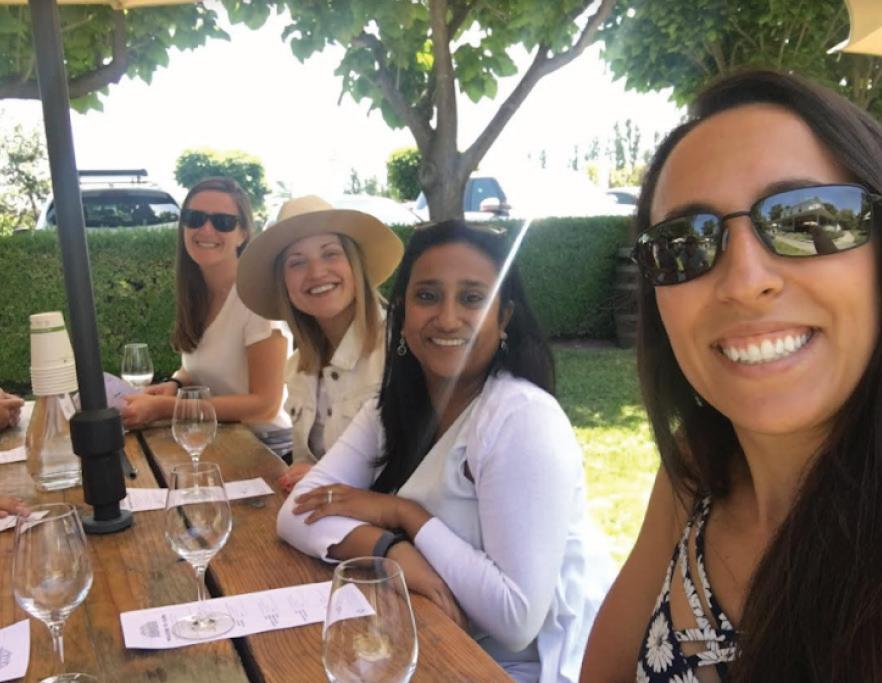
facilities, managed the production of specialty HAZMAT chemicals and facilitated safety training on the handling of HAZMAT. After her time there, she transitioned into business and program management operations as well as quality engineering roles within the defense and military contracting industries. Her efforts here supported and led the production of everything from specialty military containers, trailers and Humvees to radar systems utilized by various branches of the US military. Jen has also acquired certifications in integrative health and nutrition as well as Reiki master healing, which led her to found her own holistic healing company in early 2021 that provides services to support individuals in moving from numbed-out to nourished living so that they can live freely and healthily with purpose.
KATHLEEN (CASEY) DEWOODY '11's goal in studying ChE was to work in the healthcare industry and after graduation she indeed joined Johnson & Johnson’s global operations leadership development program. After 2 years of rotations through the consumer, medical device and pharmaceutical sectors, she went on to hold various roles throughout R&D, supply chain, operations, and quality/compliance for three of J&J’s operating companies, Neutrogena, Ethicon and Megadyne. While working, she also received her MS in regulatory science from Johns Hopkins. She has now been with J&J for almost 10 years and has recently taken a new role, which has sent her to Belgium, where she is an operations manager in one of J&J Janssen’s pharmaceutical plants. In this role she oversees manufacturing operations for new pharmaceutical product process transfers and legacy active pharmaceutical ingredients (APIs). In her free time, Casey loves to explore new places, meet new people, go for long runs and read. She is very much looking forward to traveling throughout Europe while on her international assignment and has already started learning Dutch!
KELLEY KEARNS D'11 writes that he looks back at his time at UD with great admiration for the opportunity to learn from not only the leading minds in chemical engineering but also some truly outstanding people, among his student peers and the faculty alike. He went from UD to a scientist position at Bristol-Myers Squibb in Syracuse, NY, helping to support the tech transfer and launch of two very successful oncological therapies. During that time, he also married his wife, Emily, and they fondly remember attending SU basketball games with friends. Kelley's experience with commercialization of biologics led to the opportunity to move to Düsseldorf, Germany, where he helped lead the MSAT group at Dynavax to launch their first product, Heplisav B. Kelley and Emily had their son, Liam, while in Germany and they also took advantage of their time there to vacation in locations all around the world, including Tanzania and New Zealand. After living abroad for about three years they returned to the US, where Kelley took a position with Avitide in New Hampshire. His latest achievement was leading the development of an affinity chromatography resin for purification of SARS-CoV2-S therapies. Kelley and Emily also had two girls, Mira and Abbey, two years apart. Kelley says that he looks forward to watching his children grow up and to making many more scientific contributions.
DAN GREENE D'16 spent a little over a year after leaving UD working at Reform Biologics, a start-up company in Boston focused on developing new excipient technologies for therapeutic protein formulations. For the last 3-1/2 years he has been at Amgen in various roles in the drug product technologies group, which provides solid-state chemistry support for programs in all phases of development, as well as providing formulations for programs in late-stage optimization up through first-in-human trials.
Dan has fond memories of playing in the band at the annual departmental Christmas party at UD. Dan and his wife, Michelle, have settled down just north of Boston, where they live with their two kids, Nathan (2) and Riley (6 months), and two dogs, Tucker and Zoe. Nathan loves playing in the sandbox and reading books and Riley loves to crawl after her brother and take his toys. For the last 5 years, Michelle has taught high school math and computer science.
ZACH SHEFFIELD '16 is a PhD candidate in Dr. Dipanjan Pan's lab in the Chemical, Biochemical, and Environmental Engineering Department at the University of Maryland Baltimore County. The lab focuses on developing biotechnology for applications in translational medicine. Zach's current research revolves around the development of a carbon dot-based sensor that relies on aggregation for the targeted detection of SARS-CoV-2 RNA and the development of a wearable sensor for the detection of biomarkers related to anxiety and mood disorders. Aside from his main research areas, Zach is also a member of the IMSD Meyerhoff Graduate Fellows Program and is actively working toward honing his teaching skills for pursuing his goal of becoming an educator in academia.
